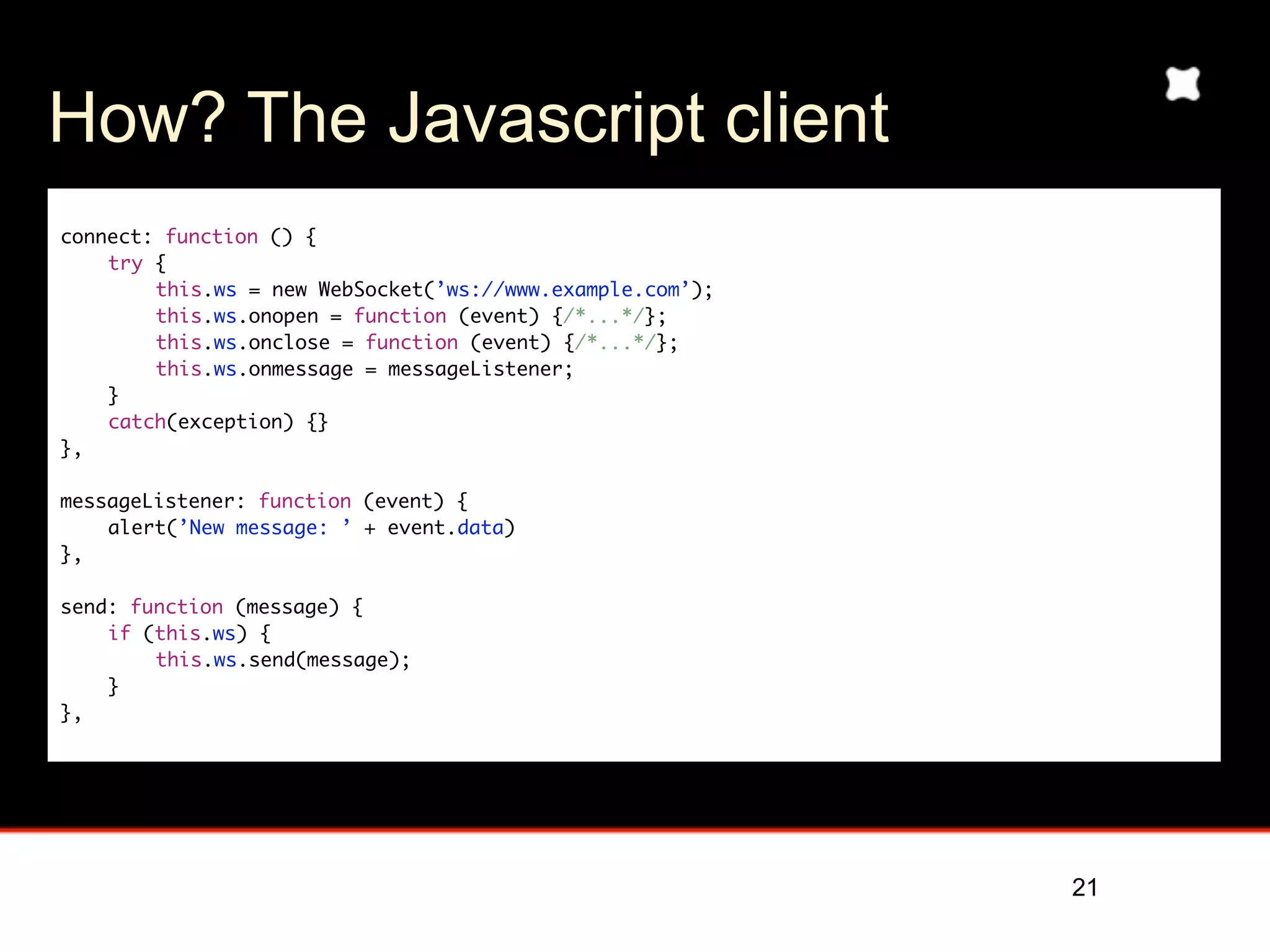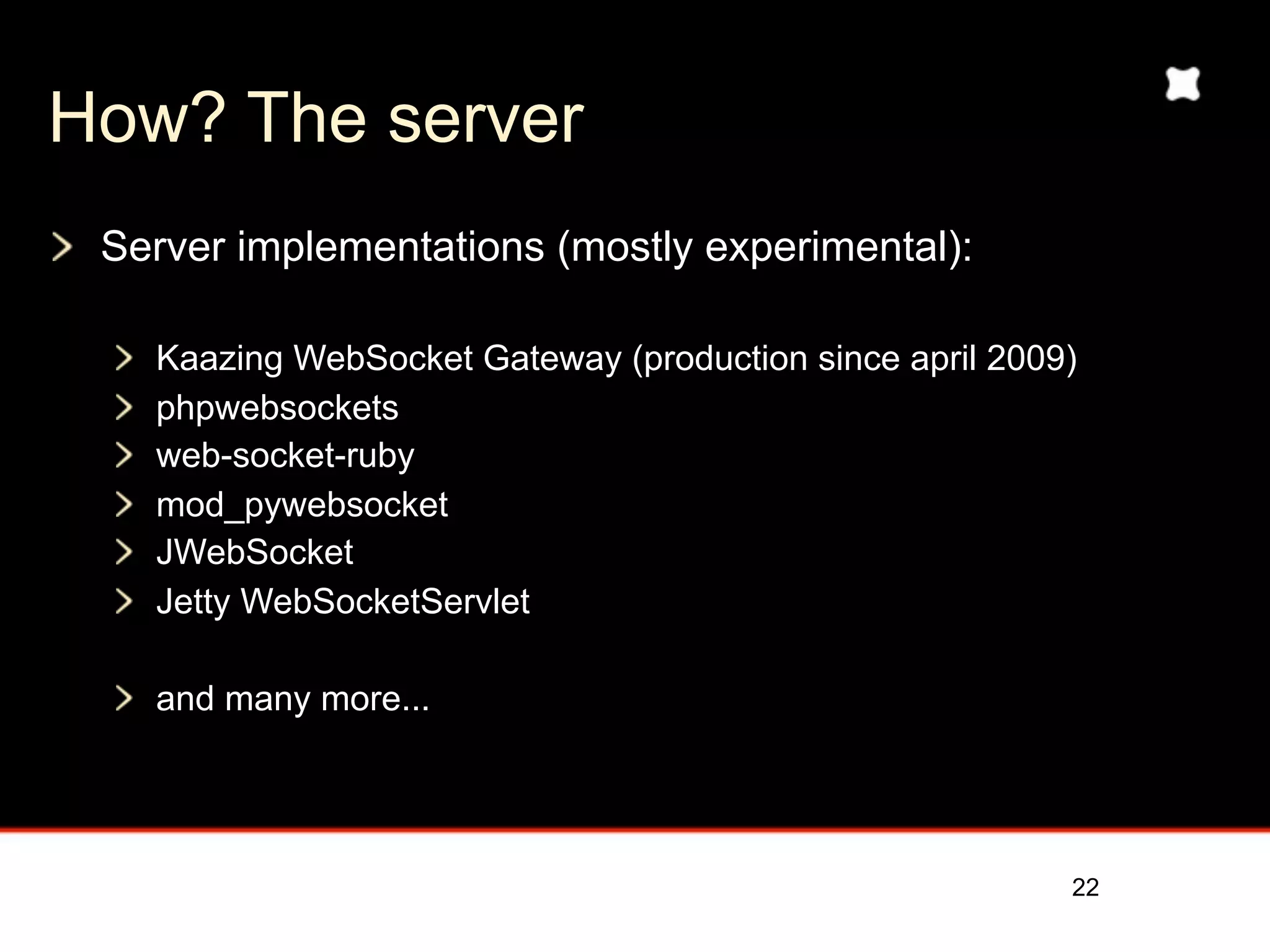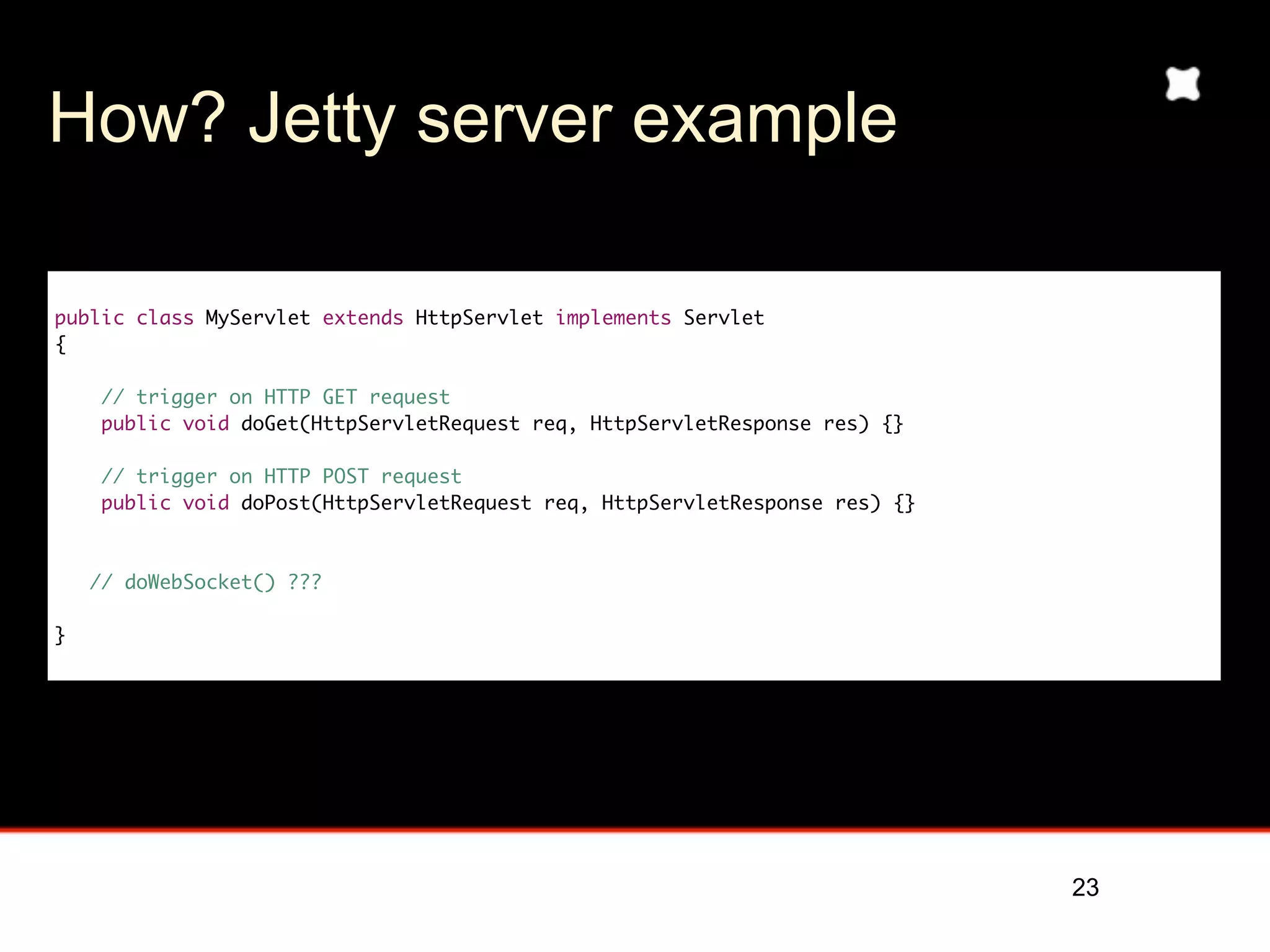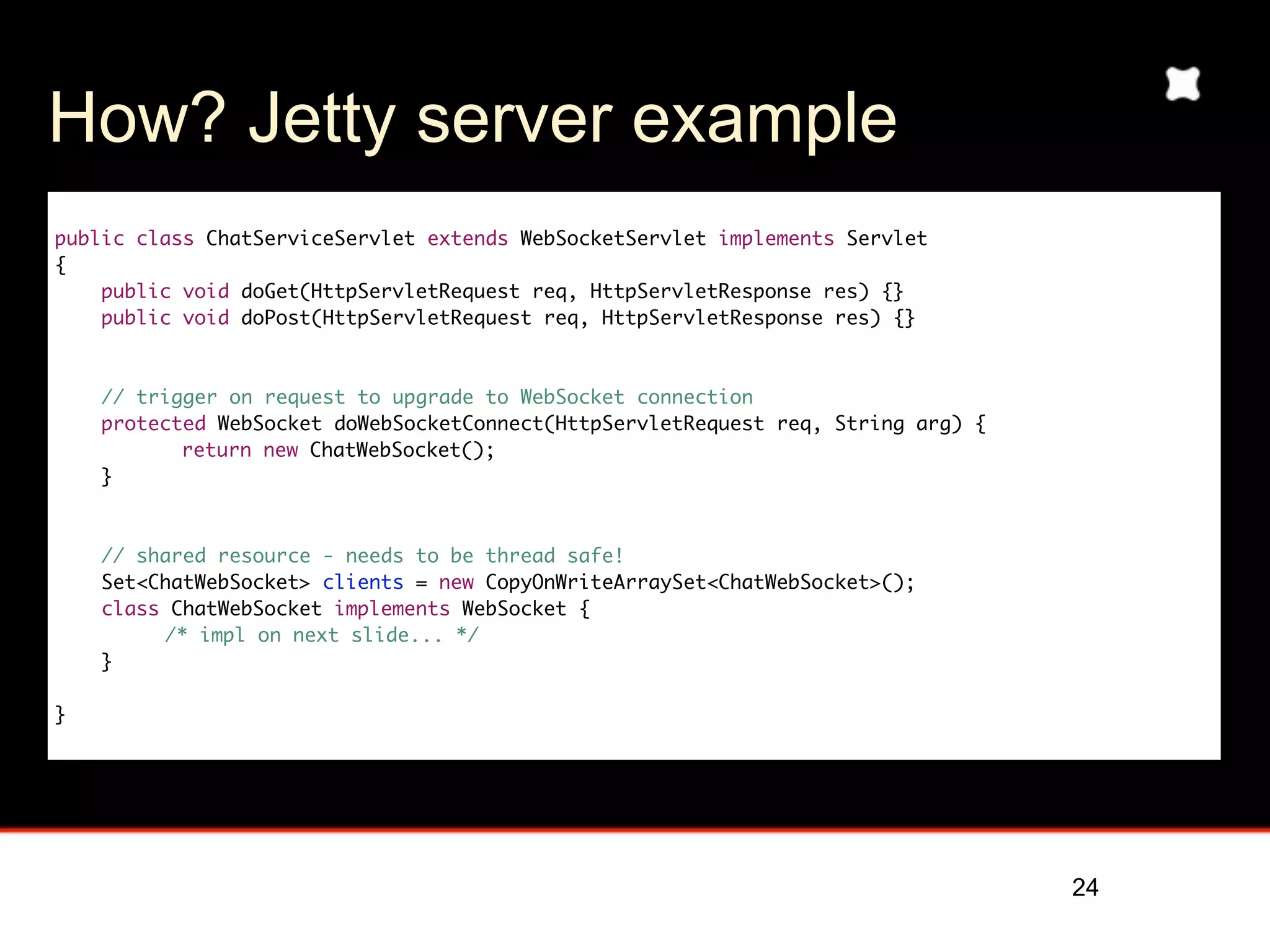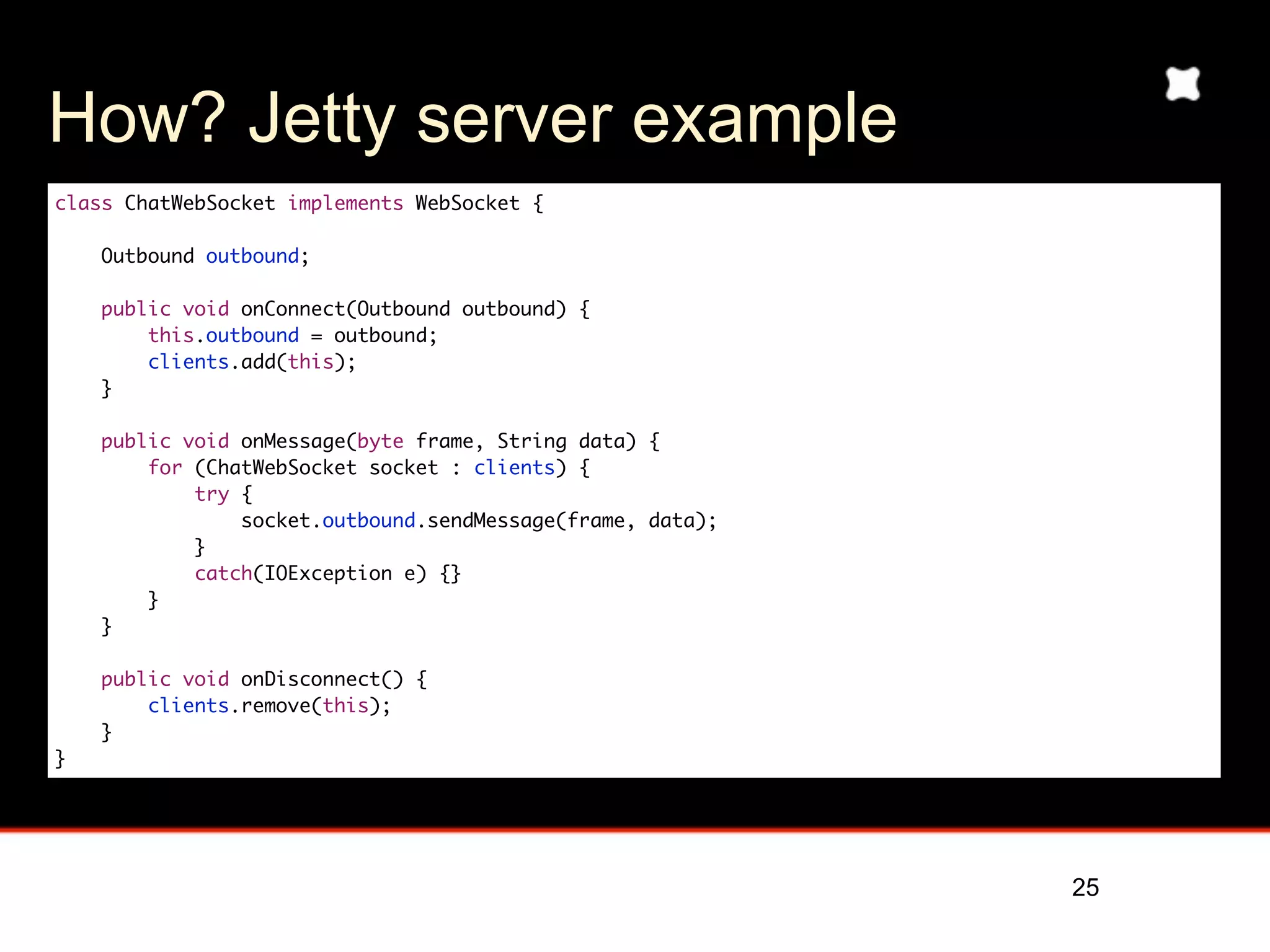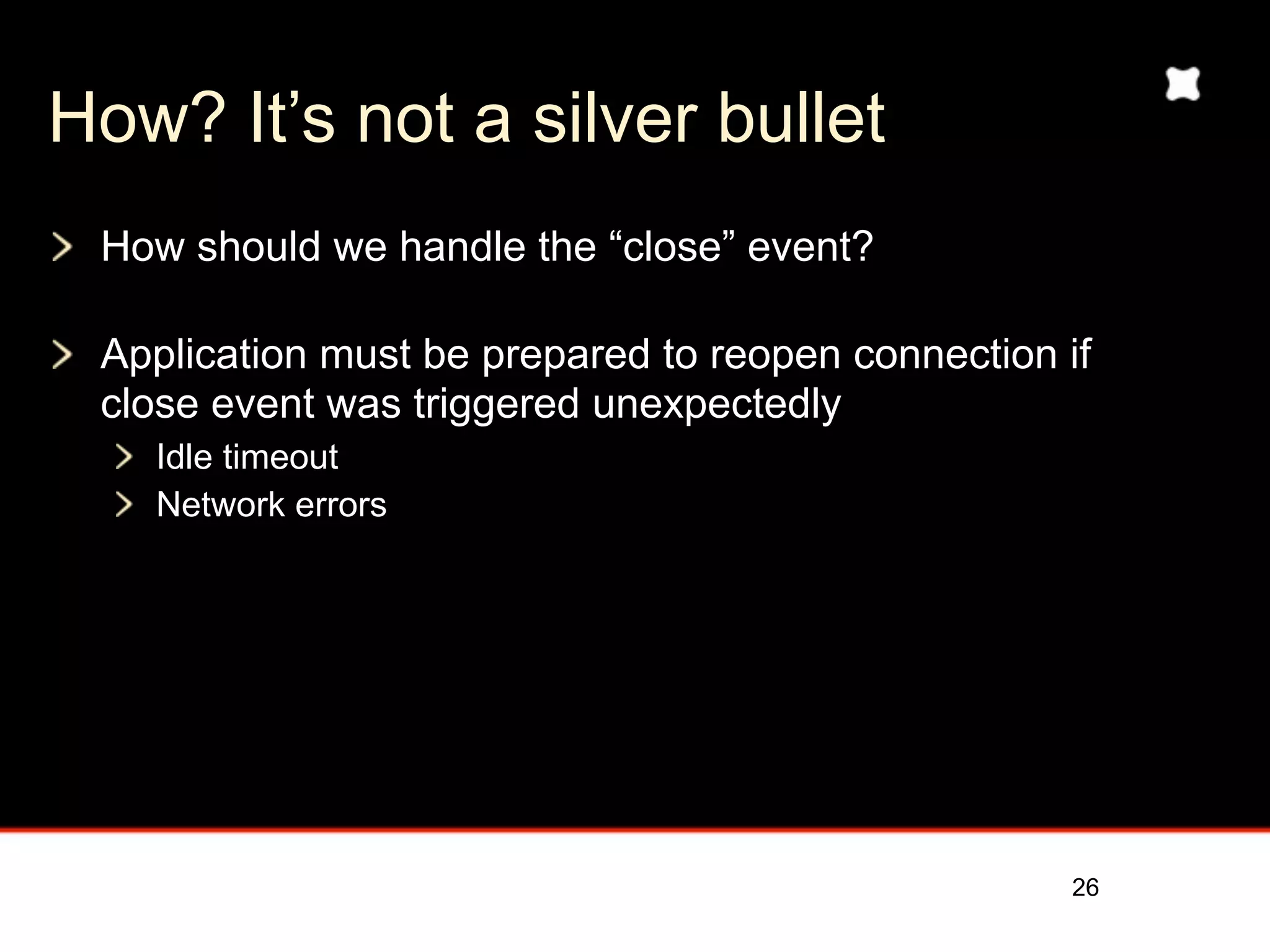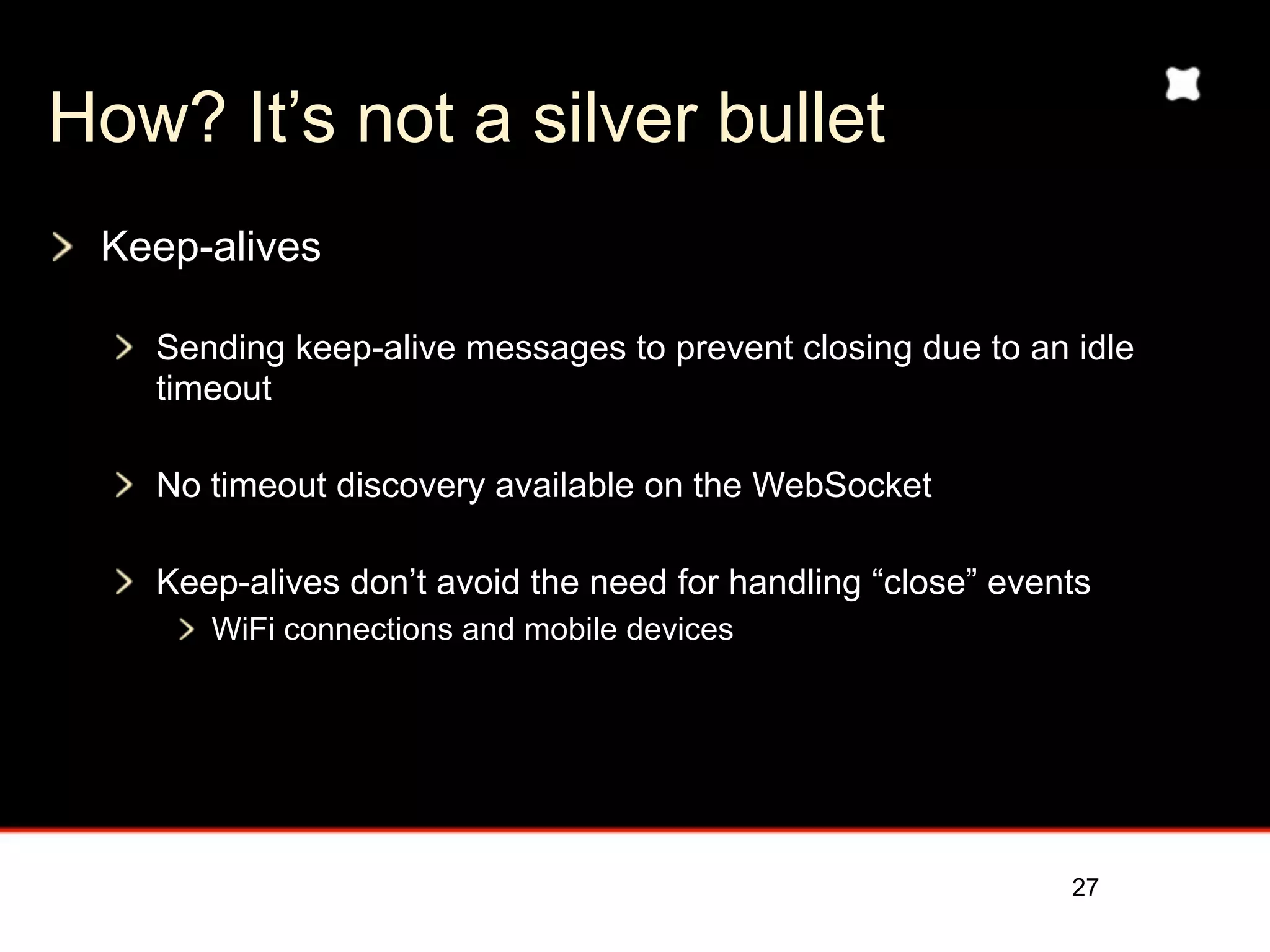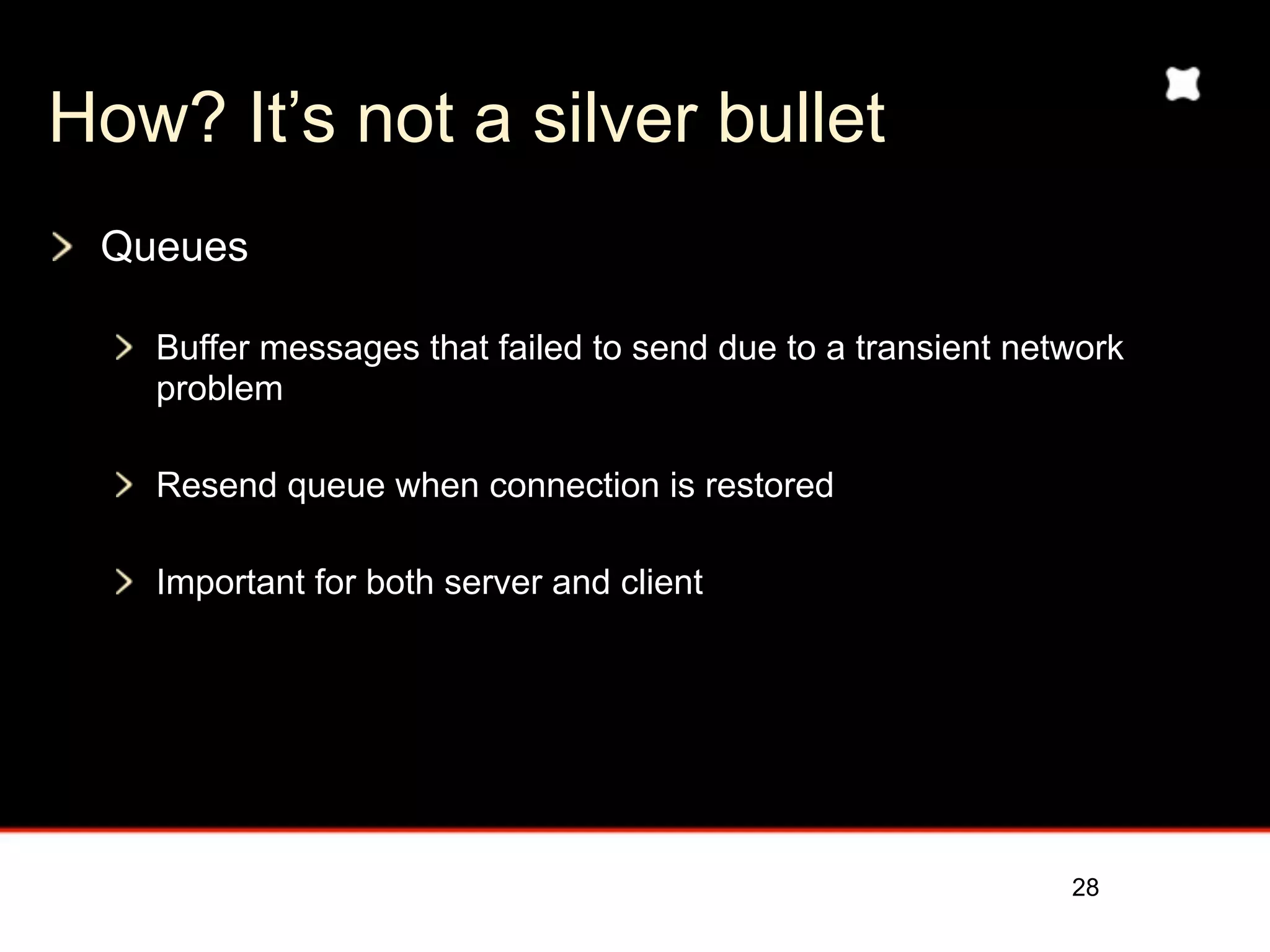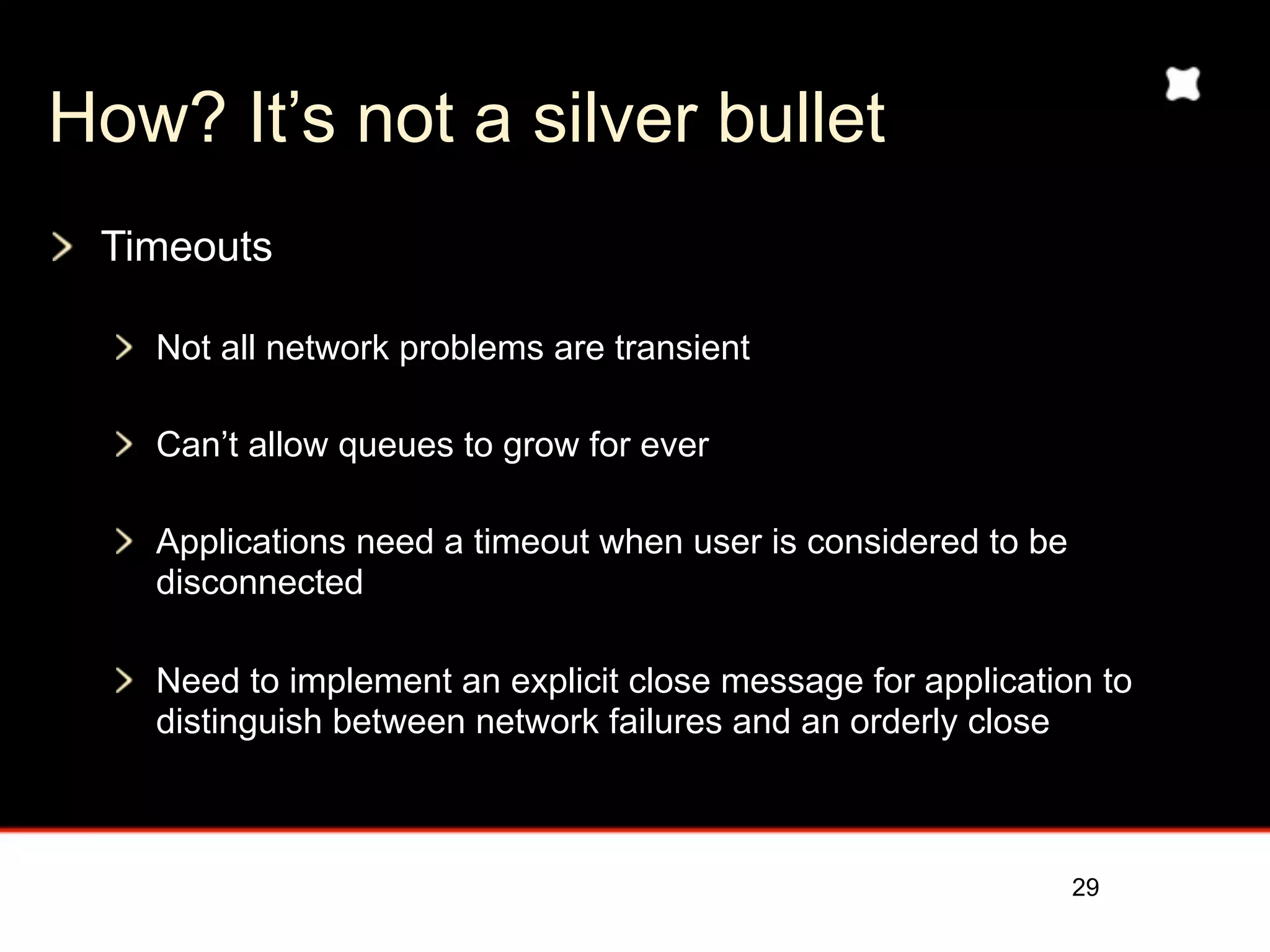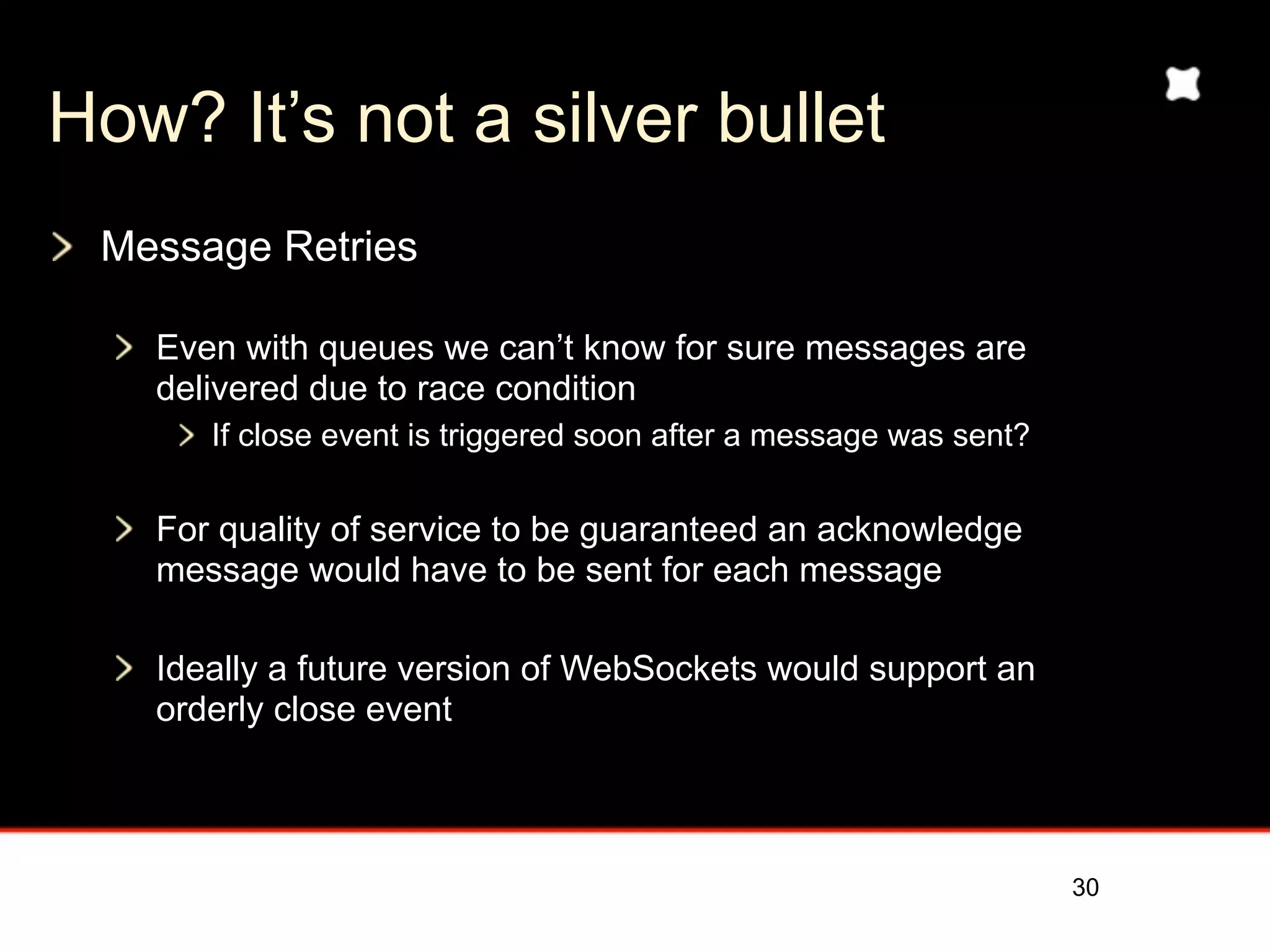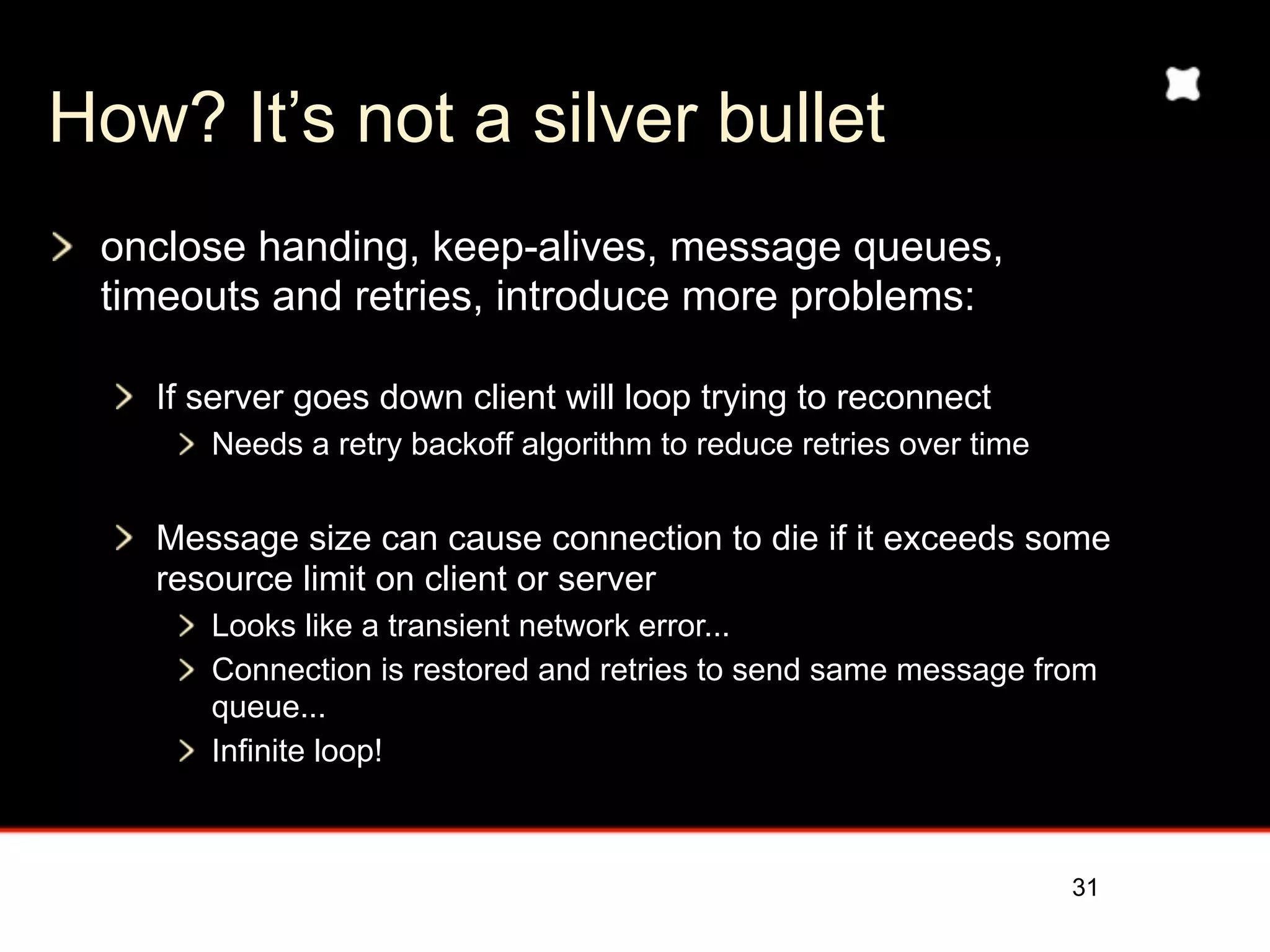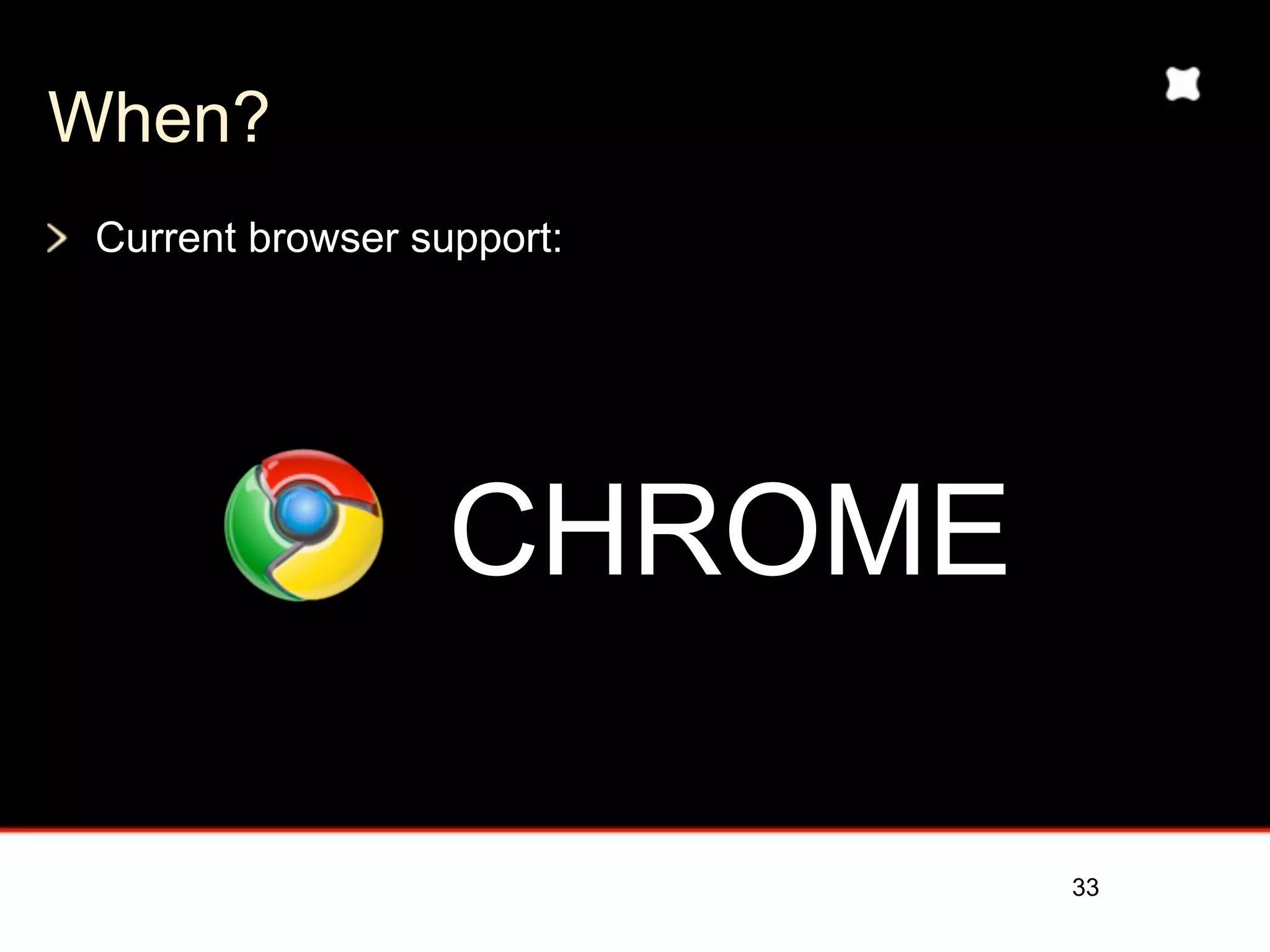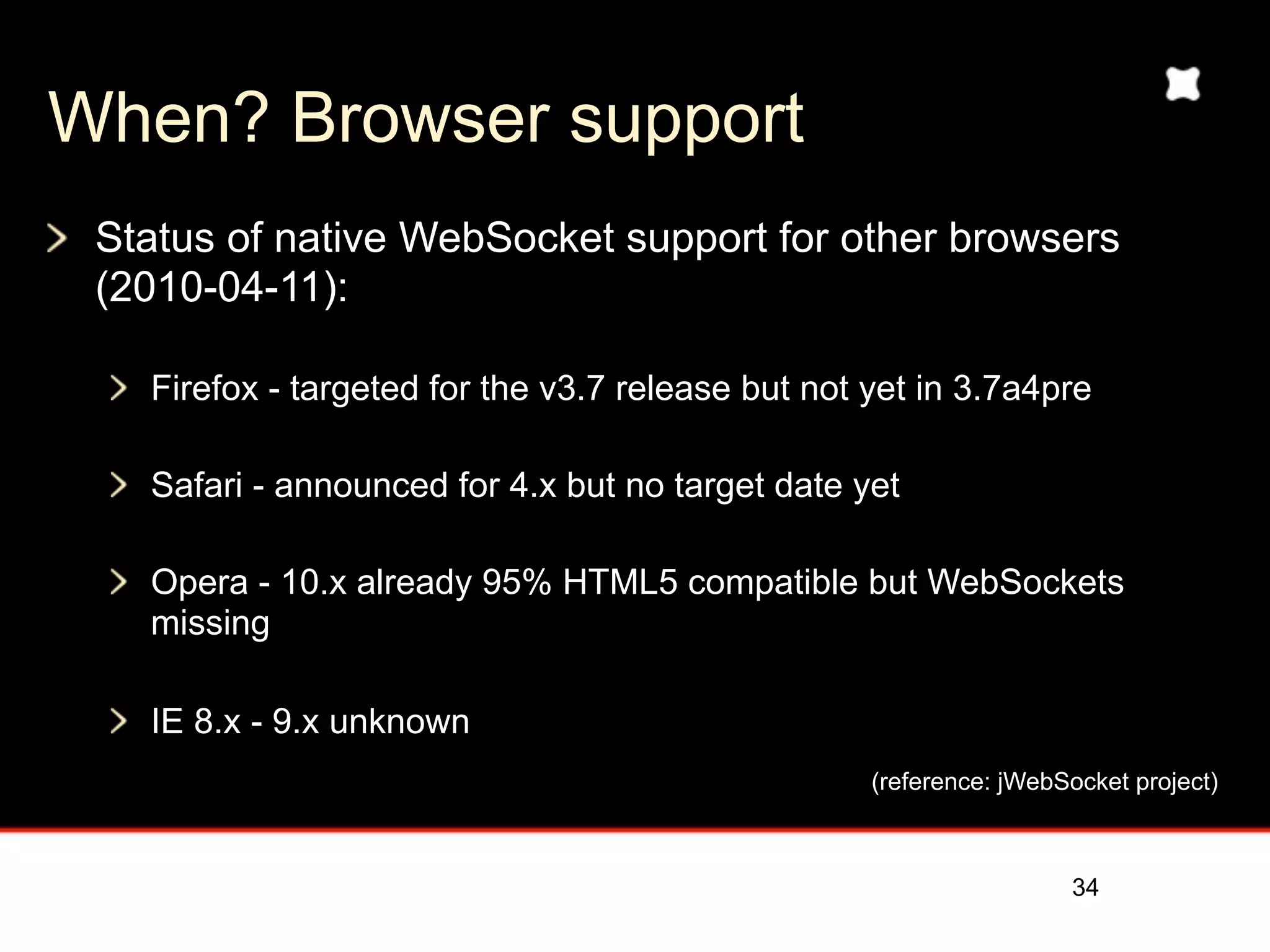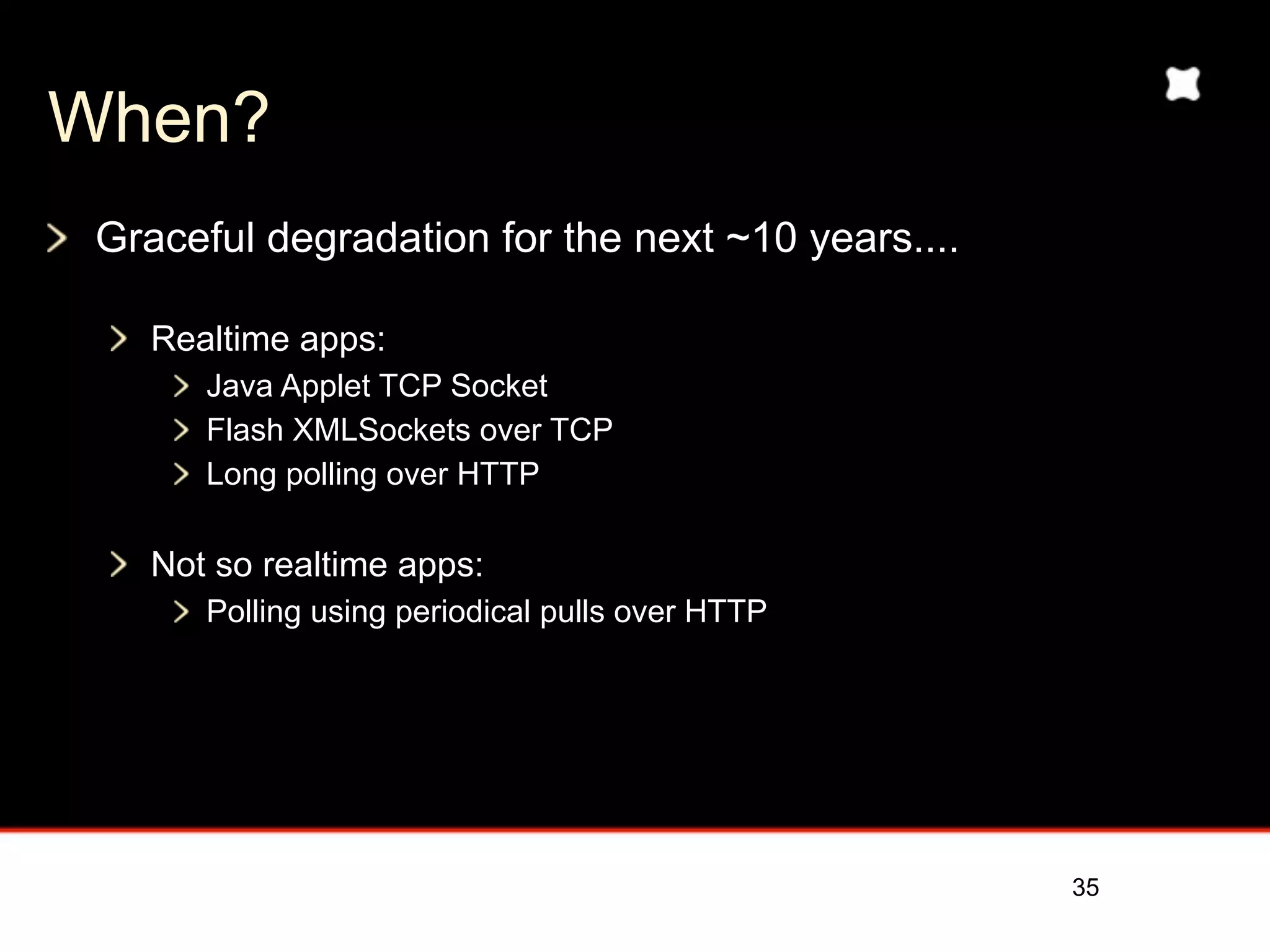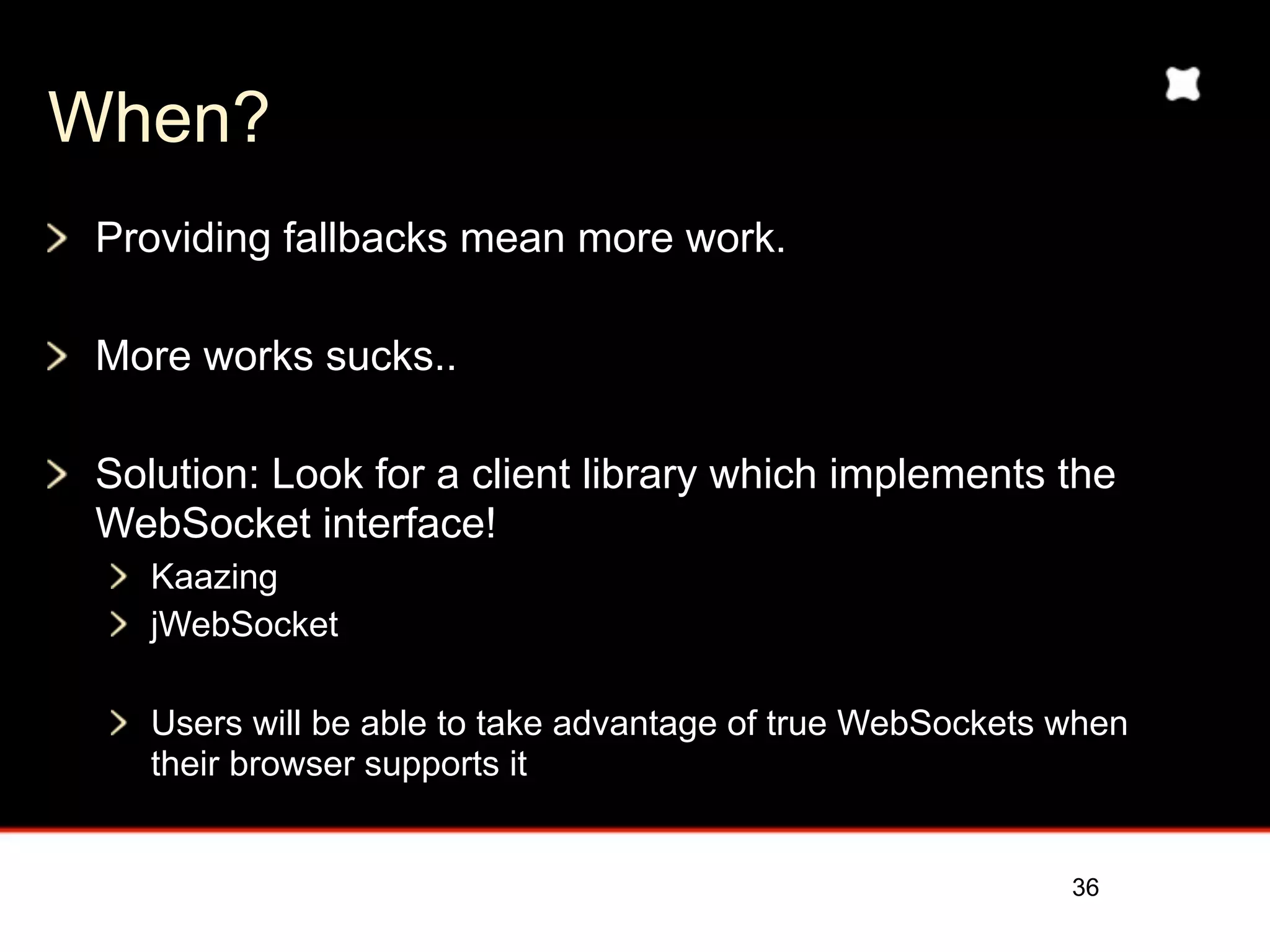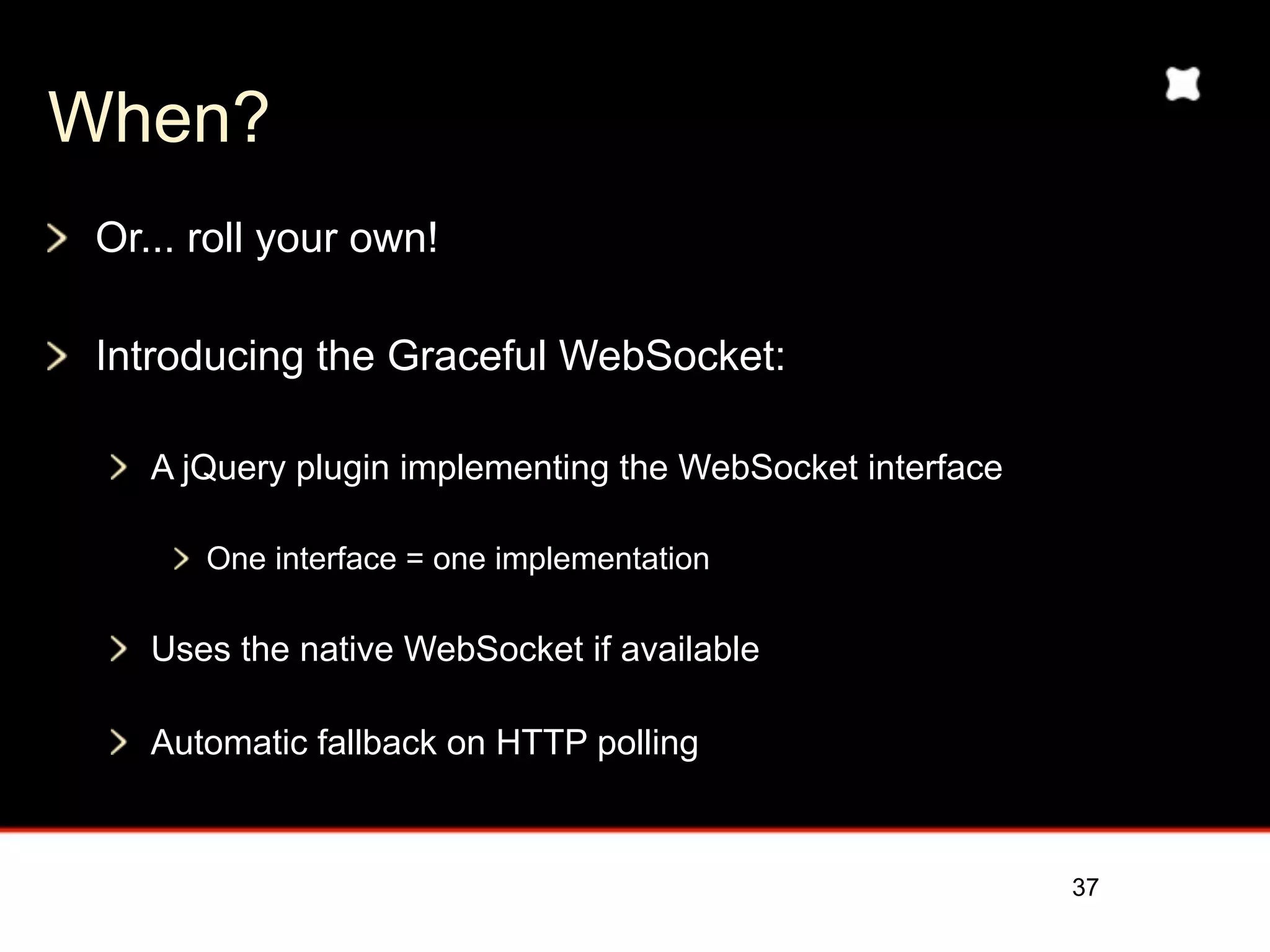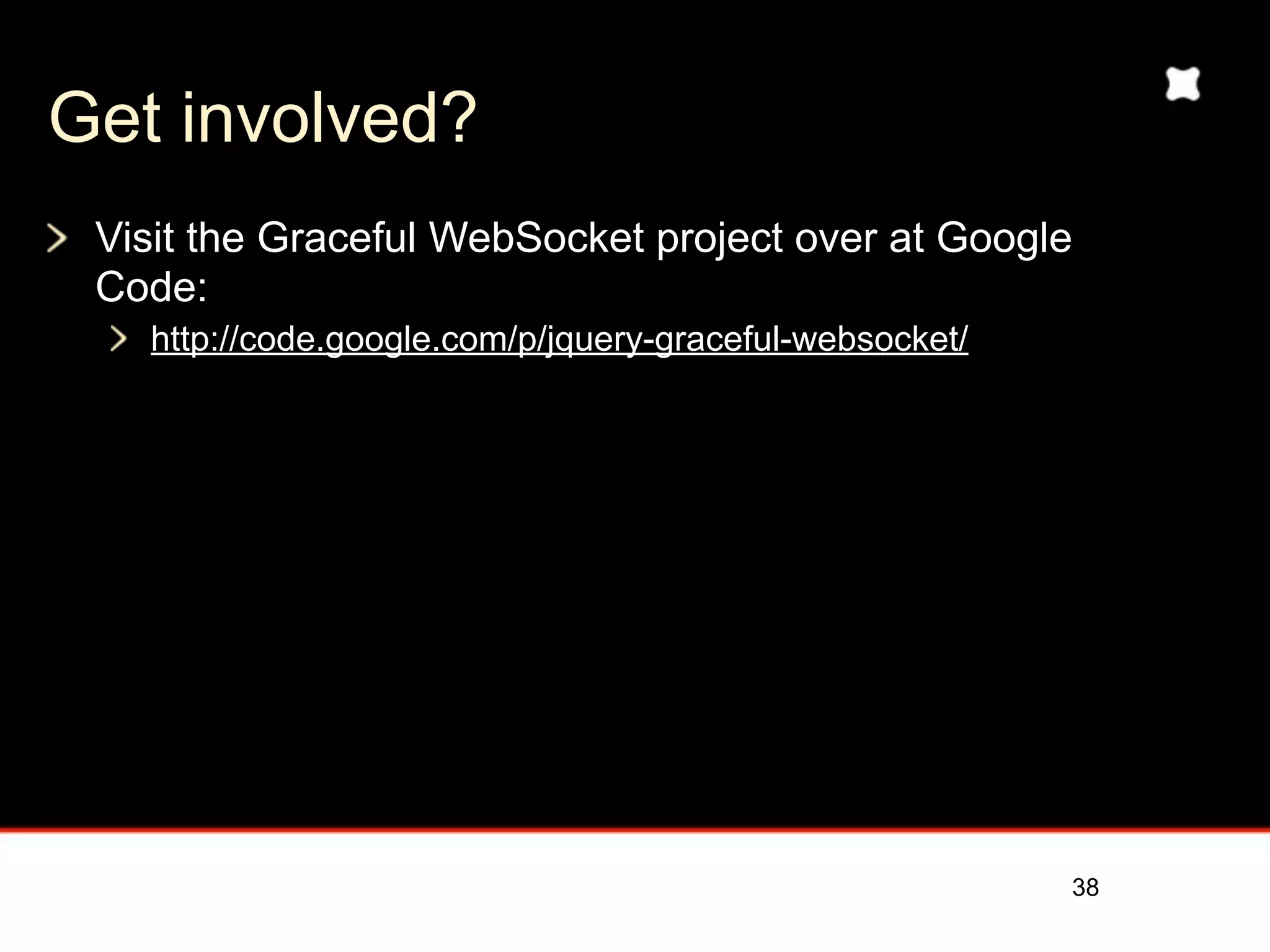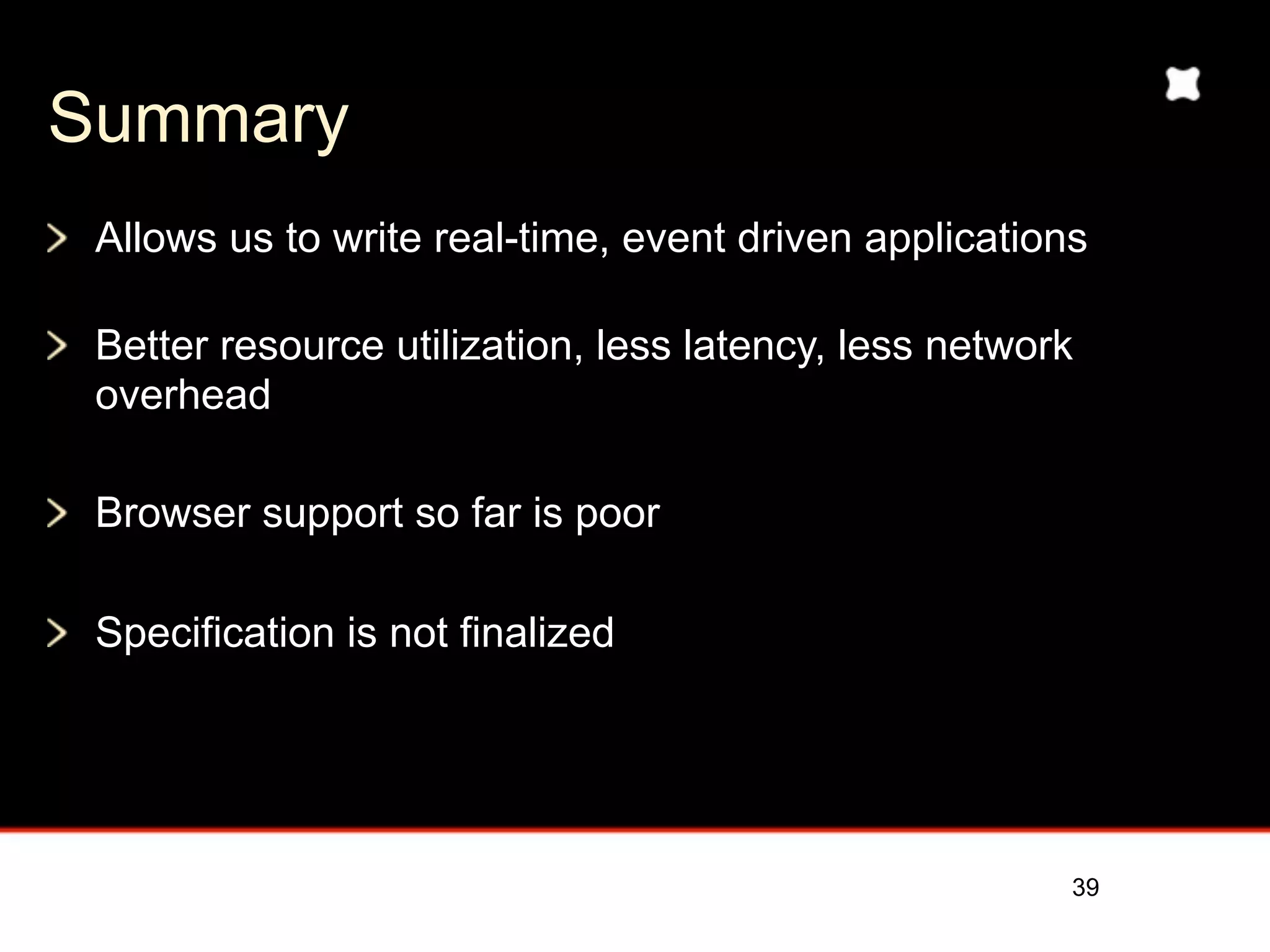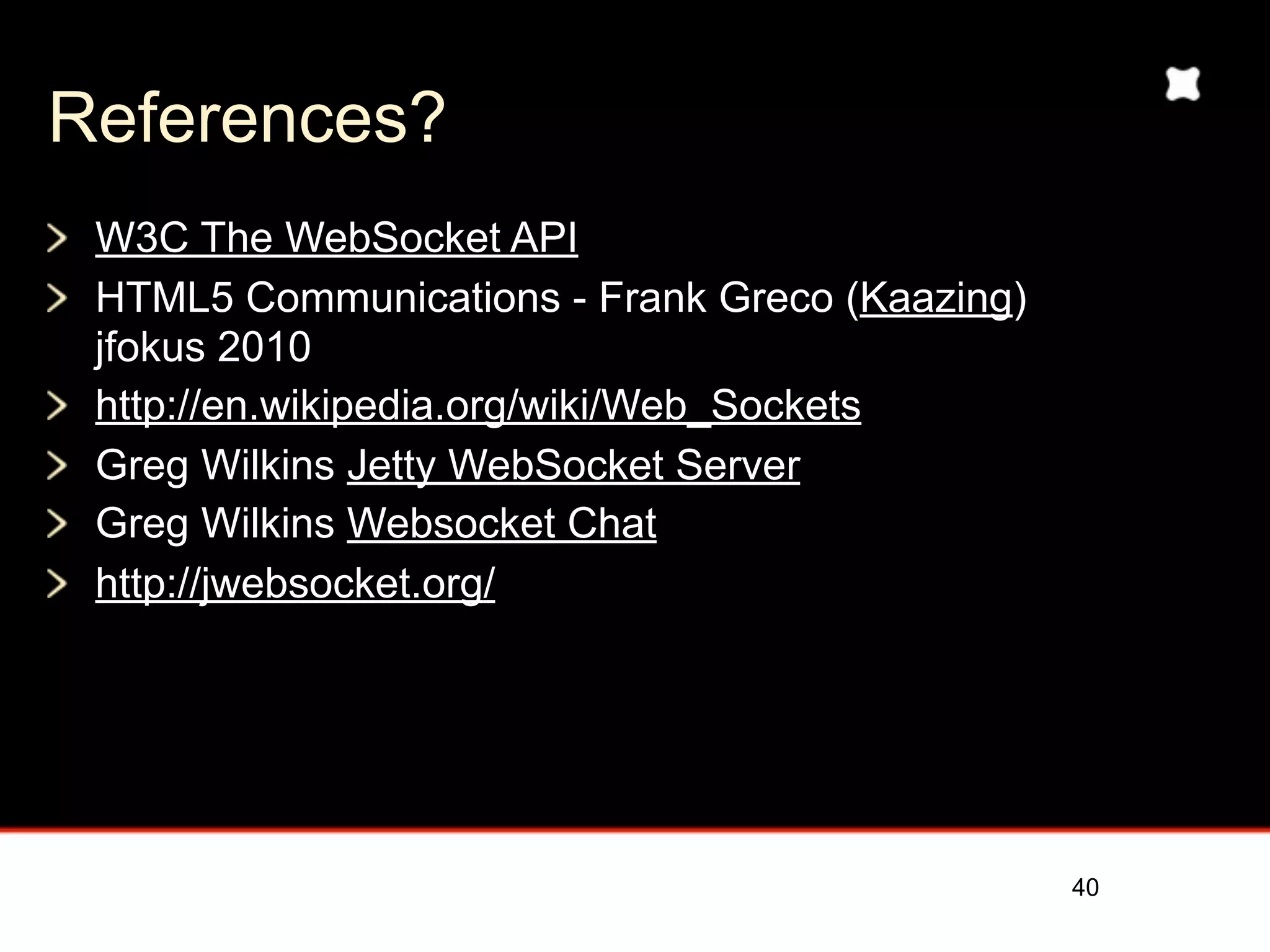The HTML5 WebSocket API allows for true full-duplex communication between a client and server. It uses the WebSocket protocol which provides a standardized way for the client to "upgrade" an HTTP connection to a WebSocket connection, allowing for messages to be sent in either direction at any time with very little overhead. This enables real-time applications that were previously difficult to achieve with traditional HTTP requests. Common server implementations include Kaazing WebSocket Gateway, Jetty, and Node.js. The JavaScript API provides an easy way for clients to connect, send, and receive messages via a WebSocket connection.
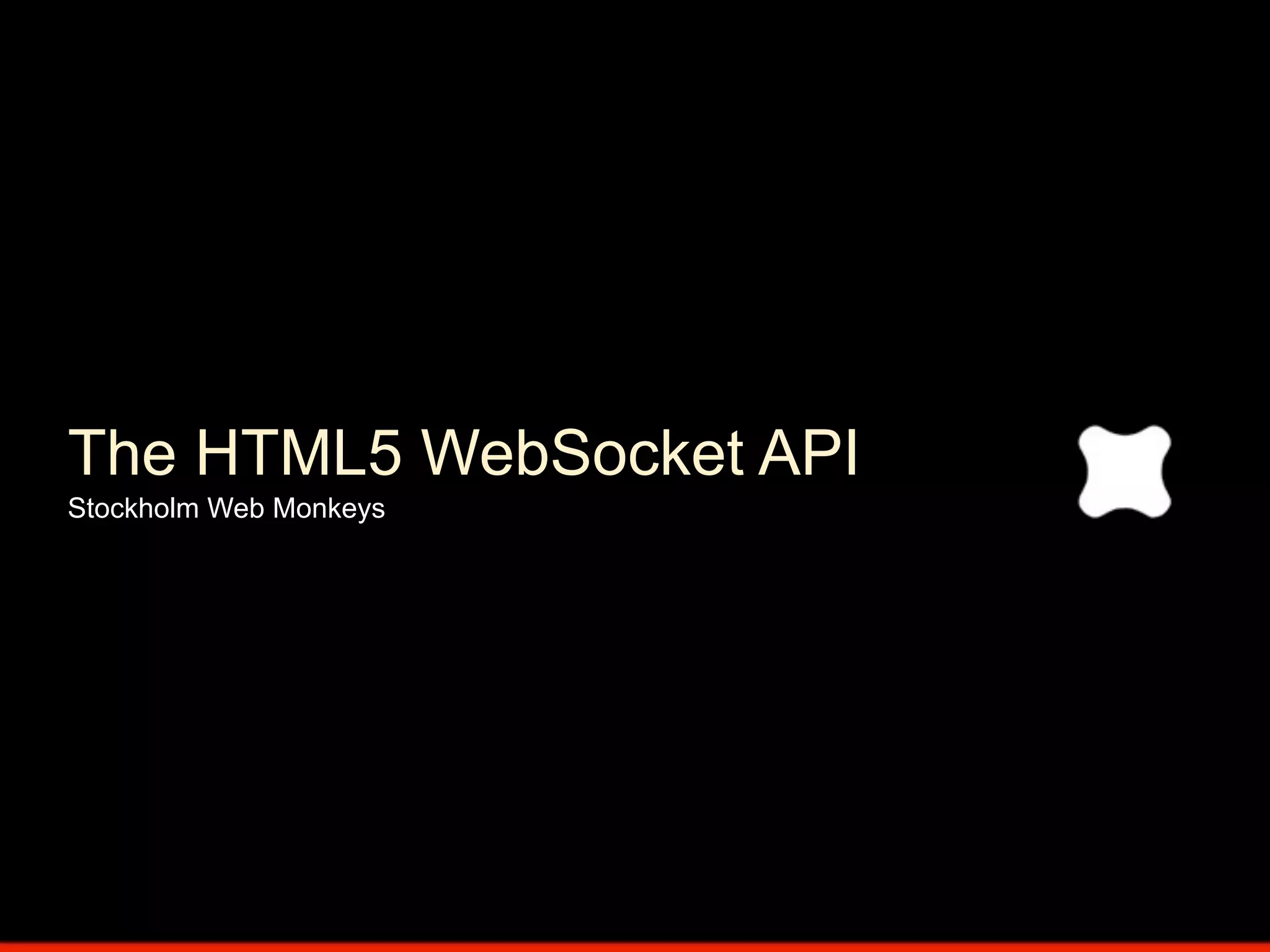
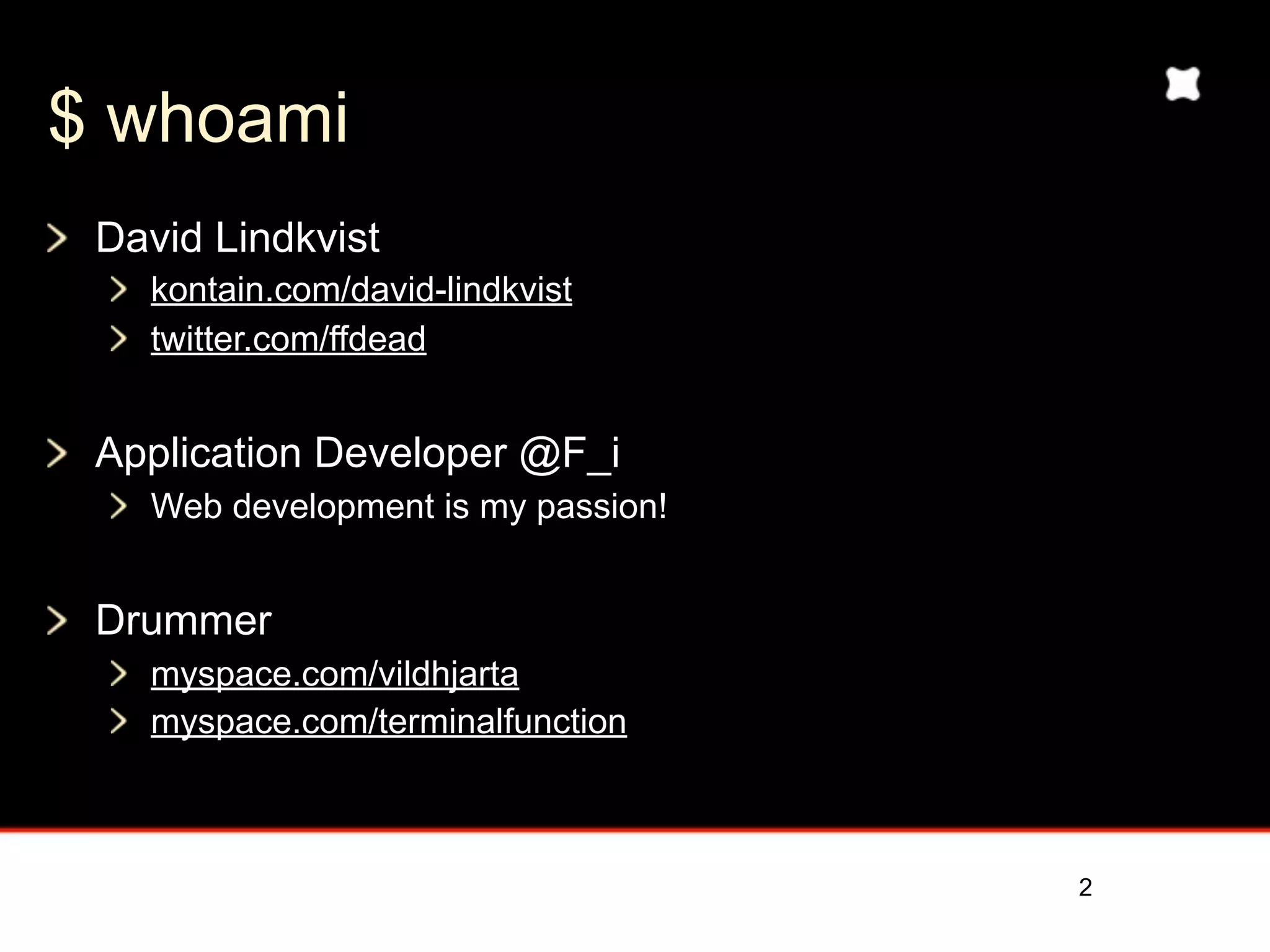
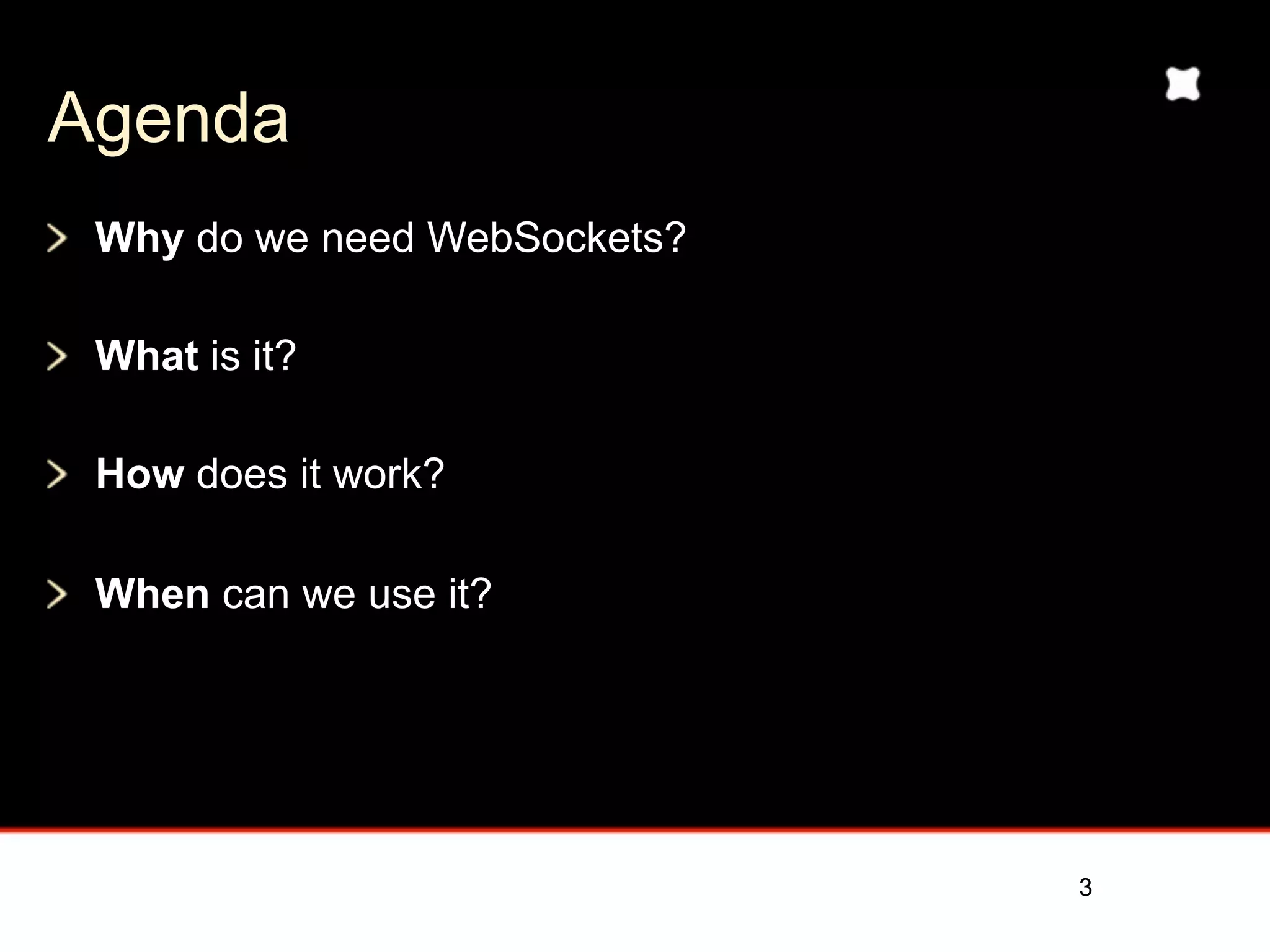

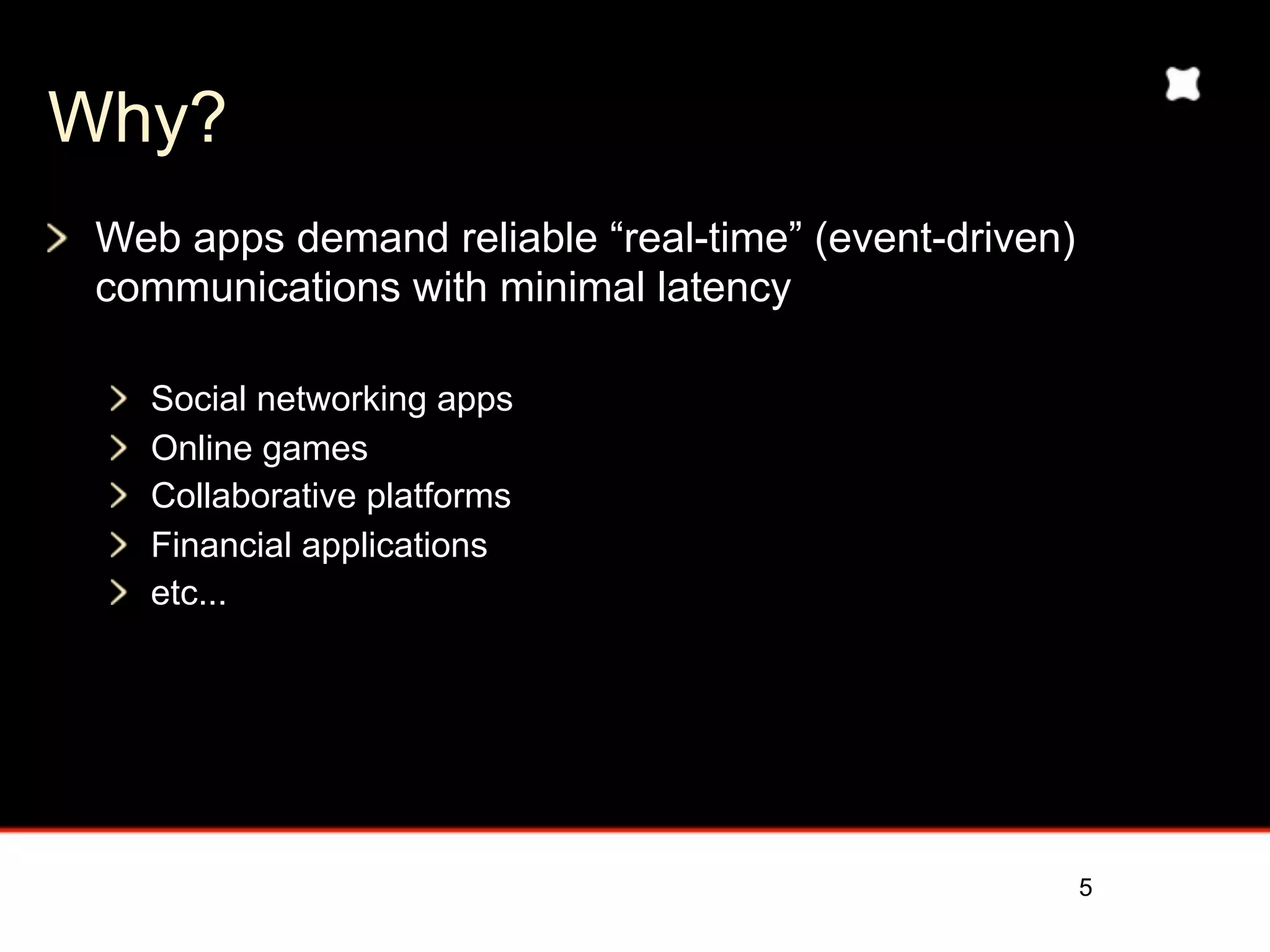
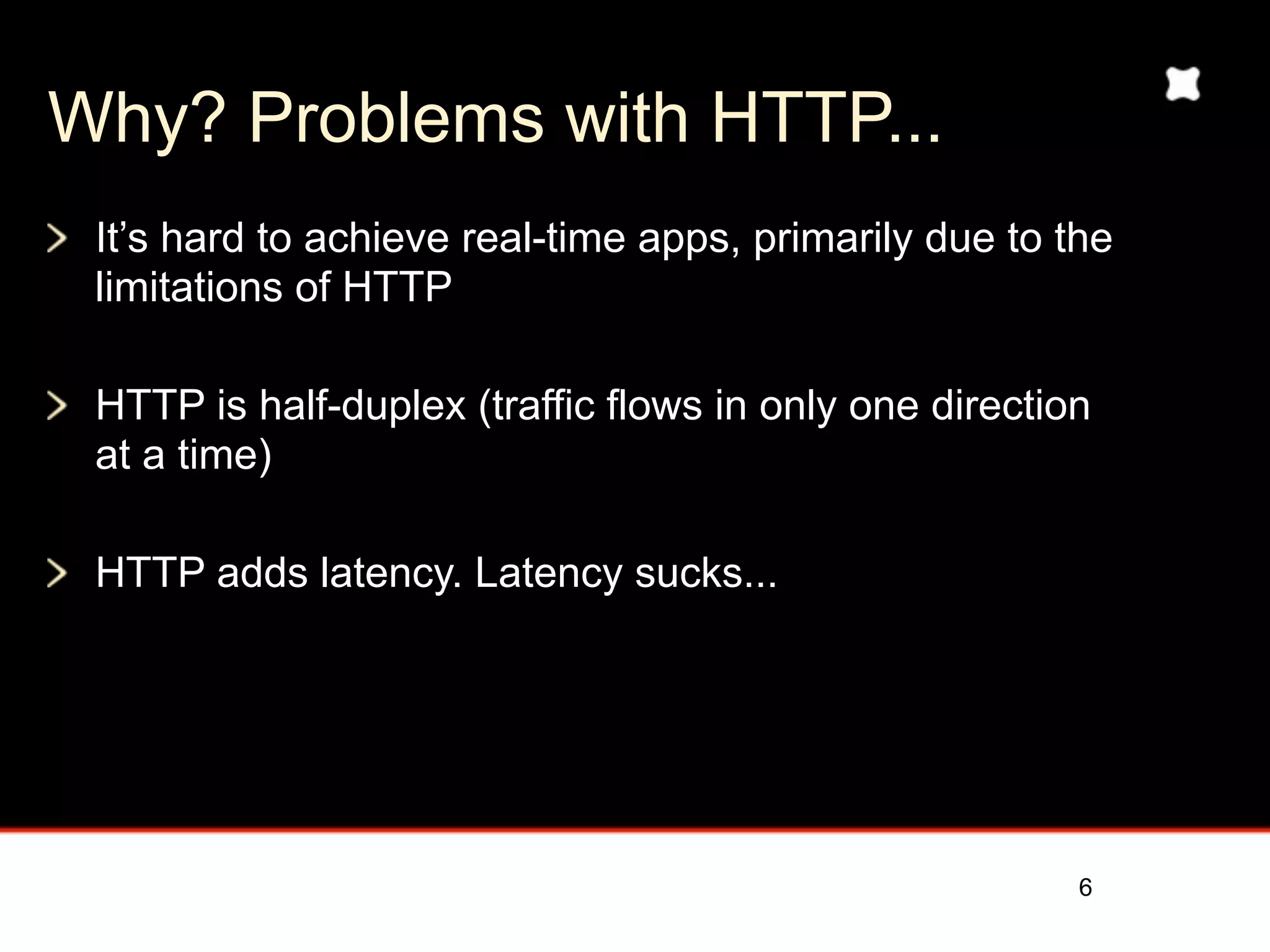
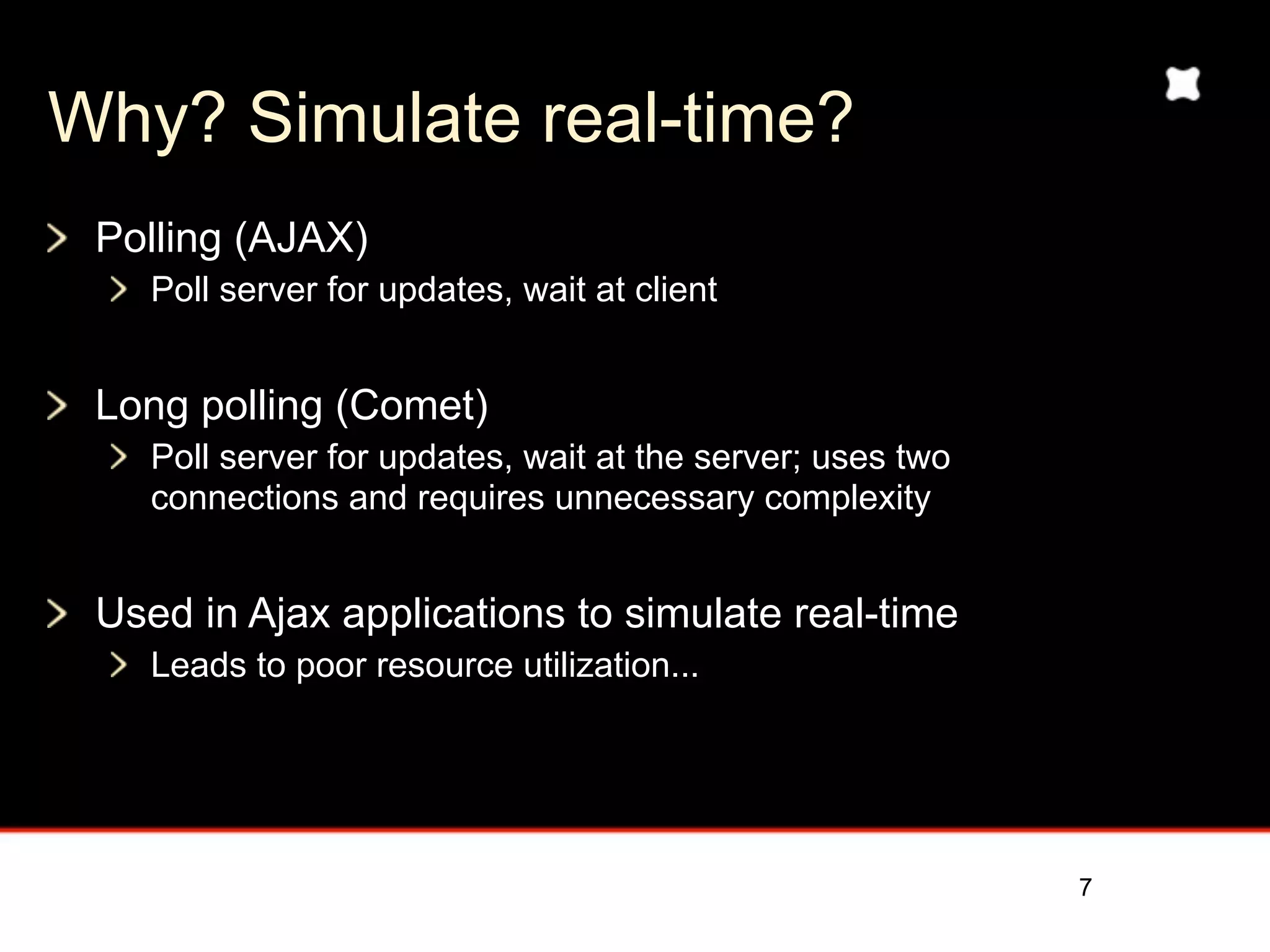
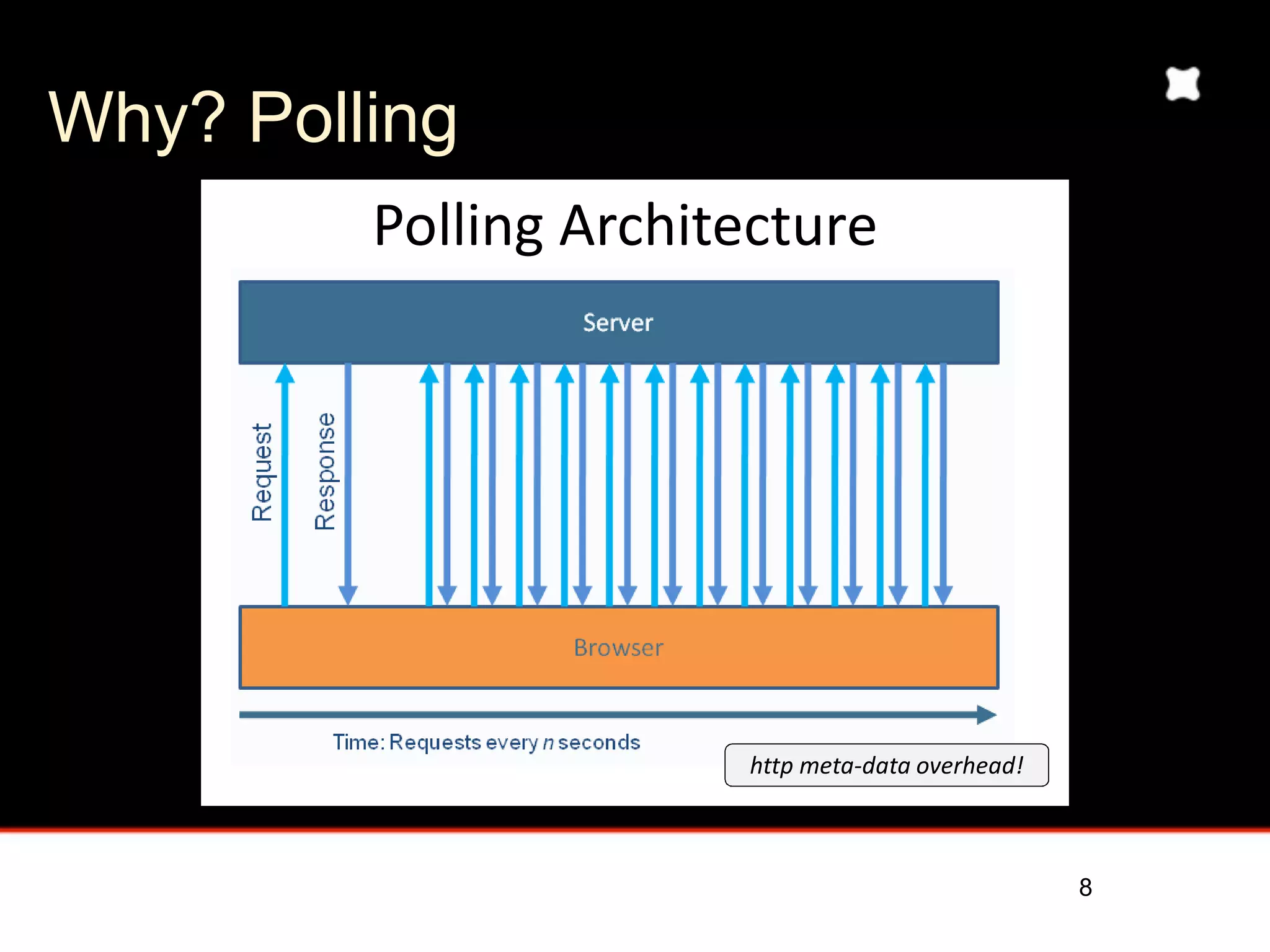
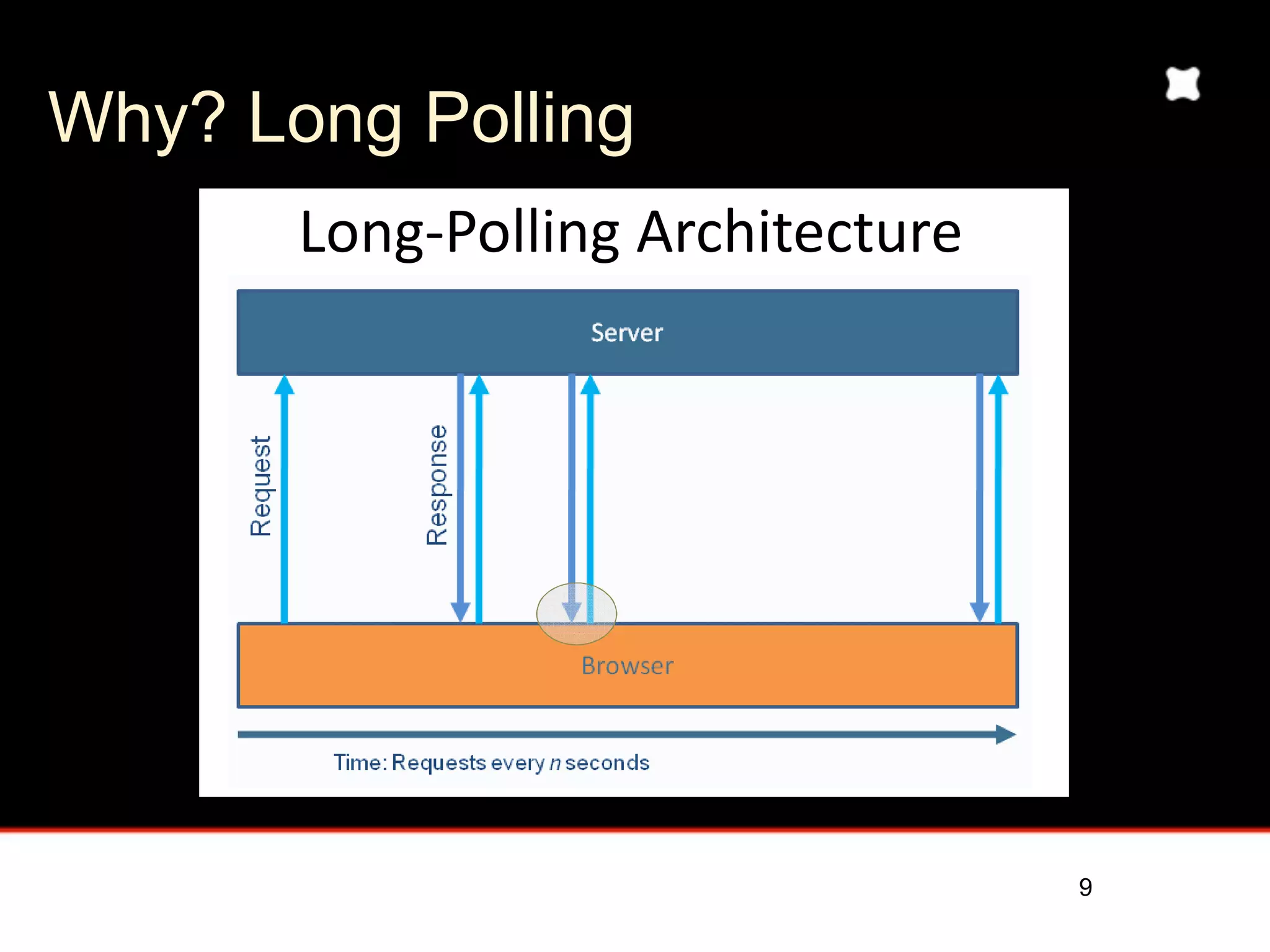
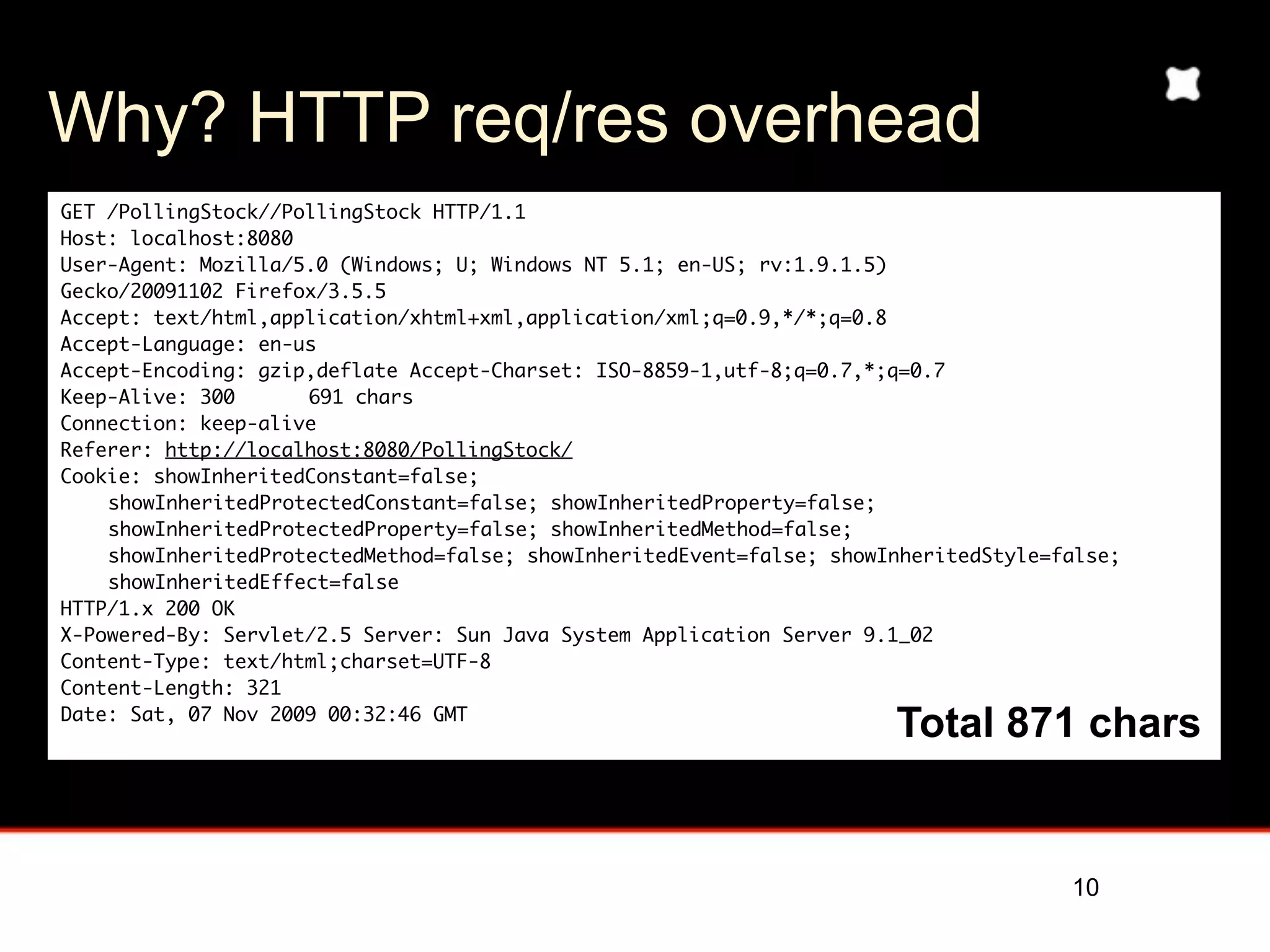
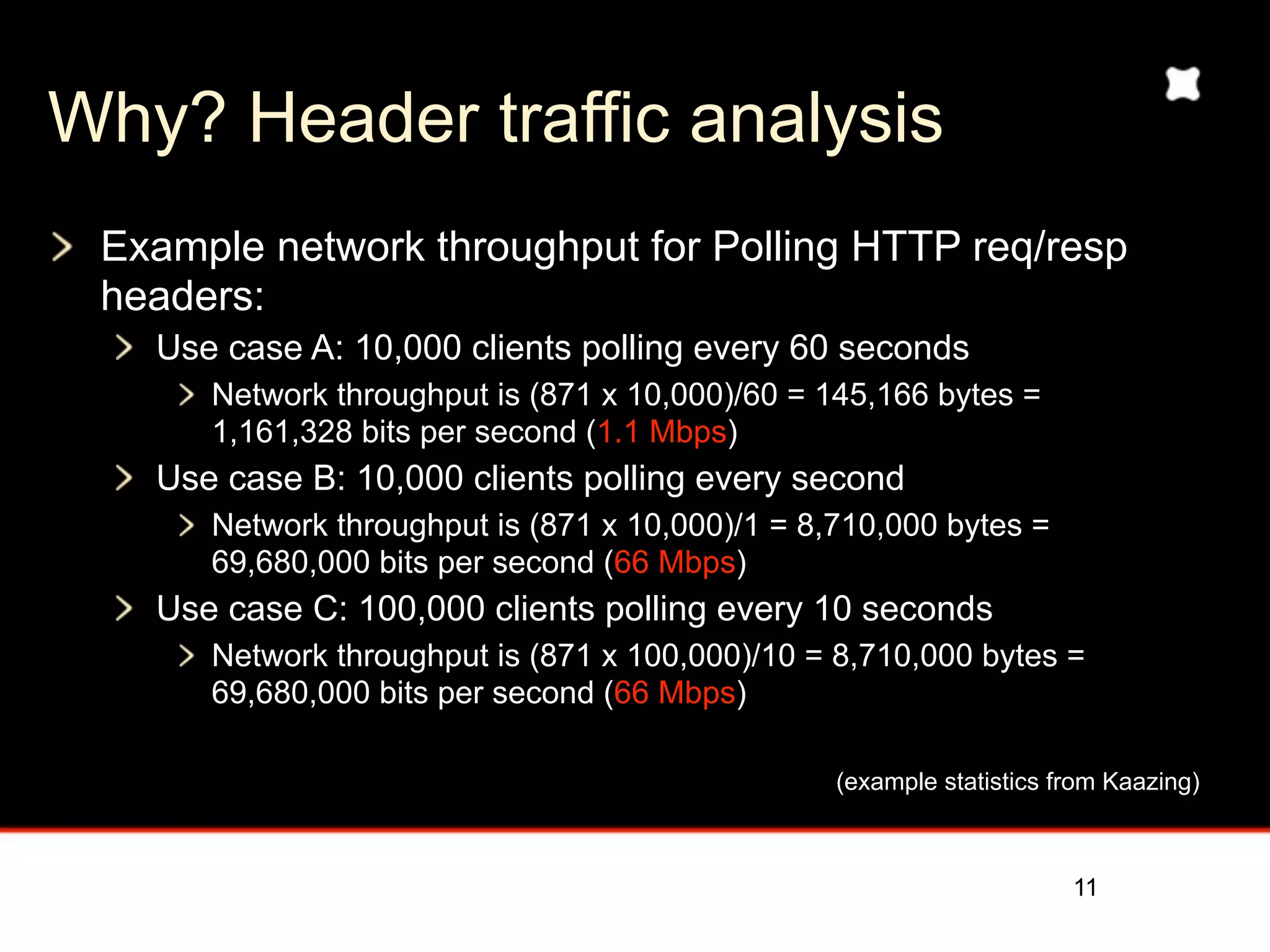

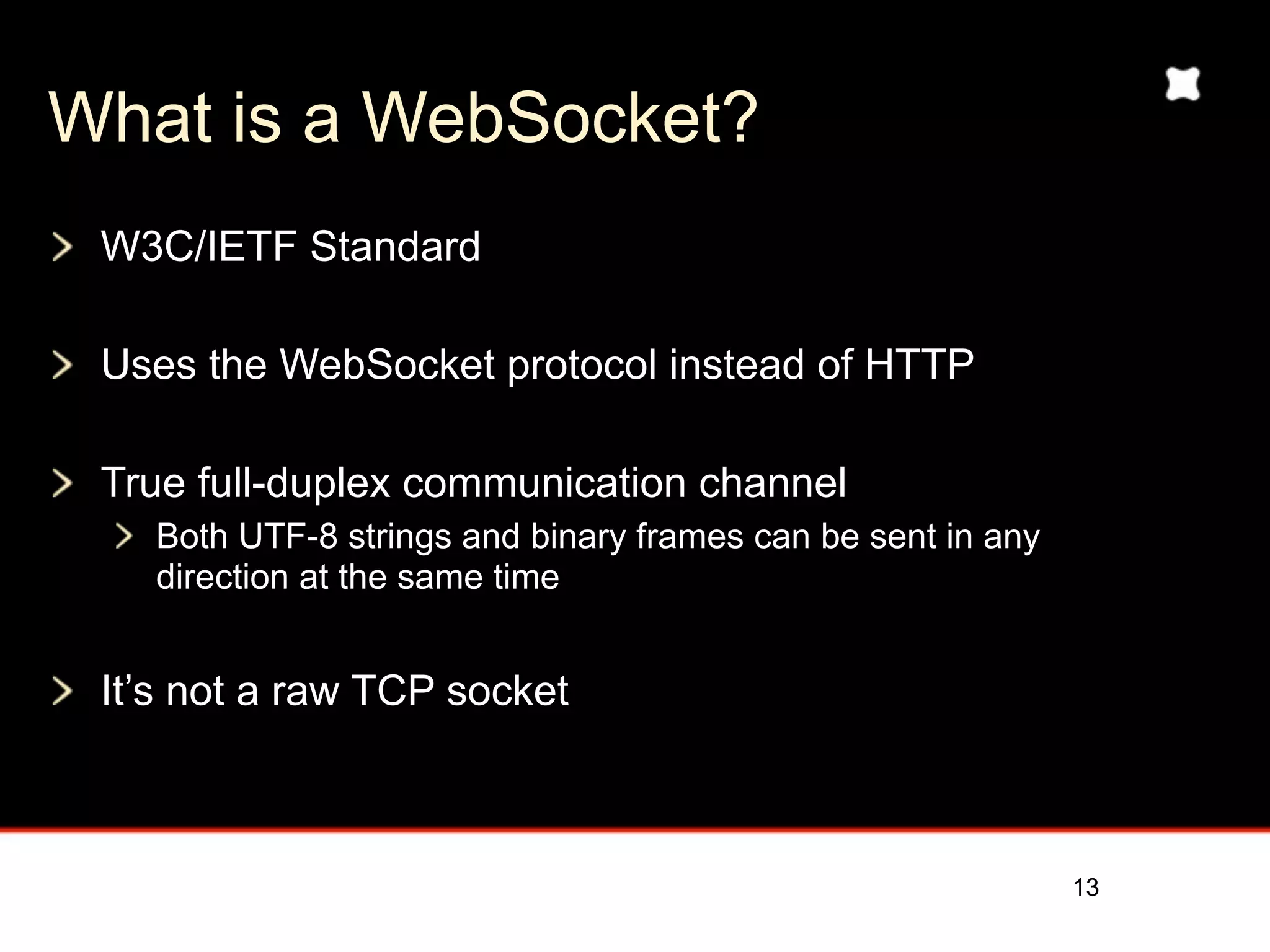
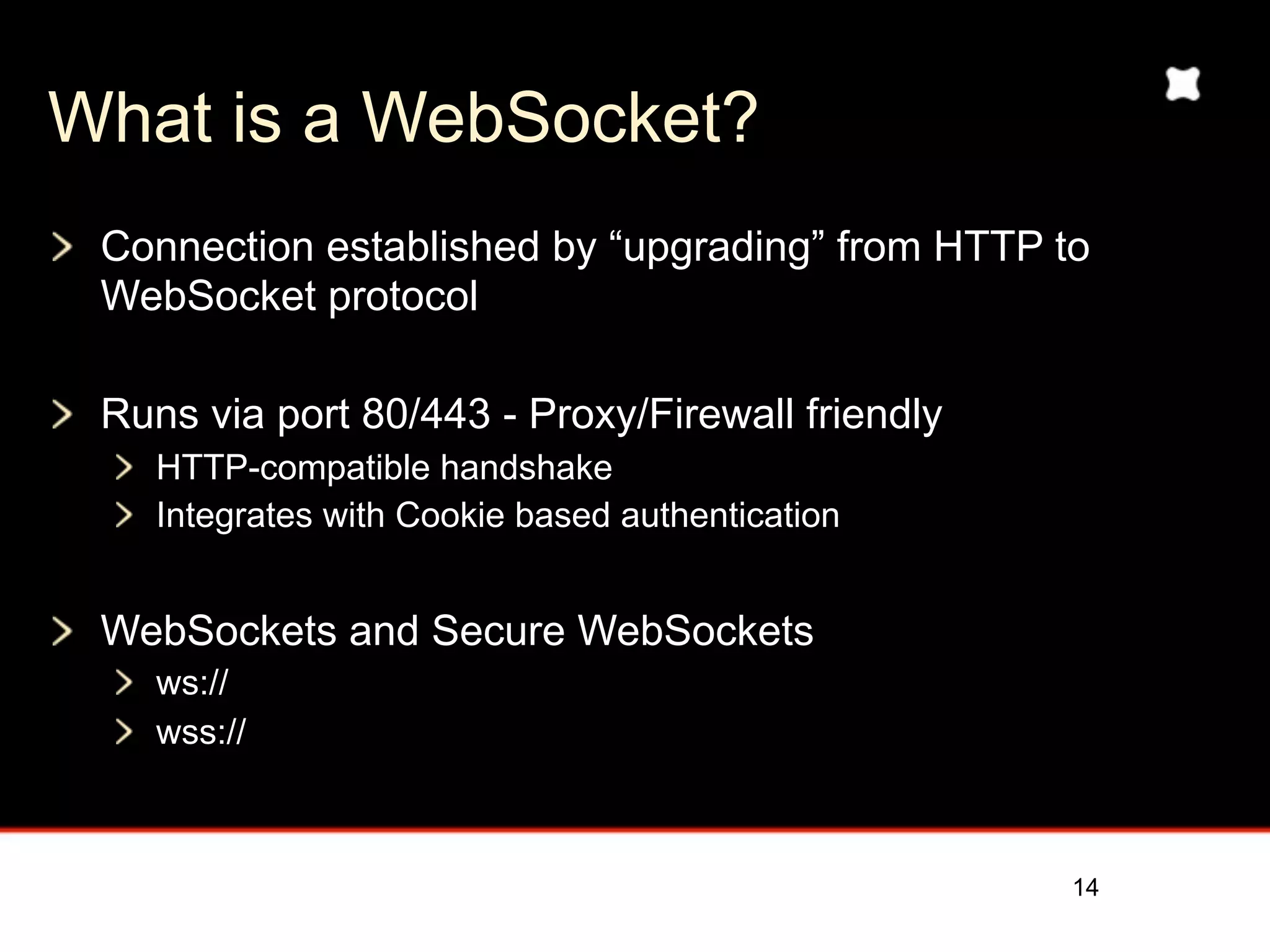
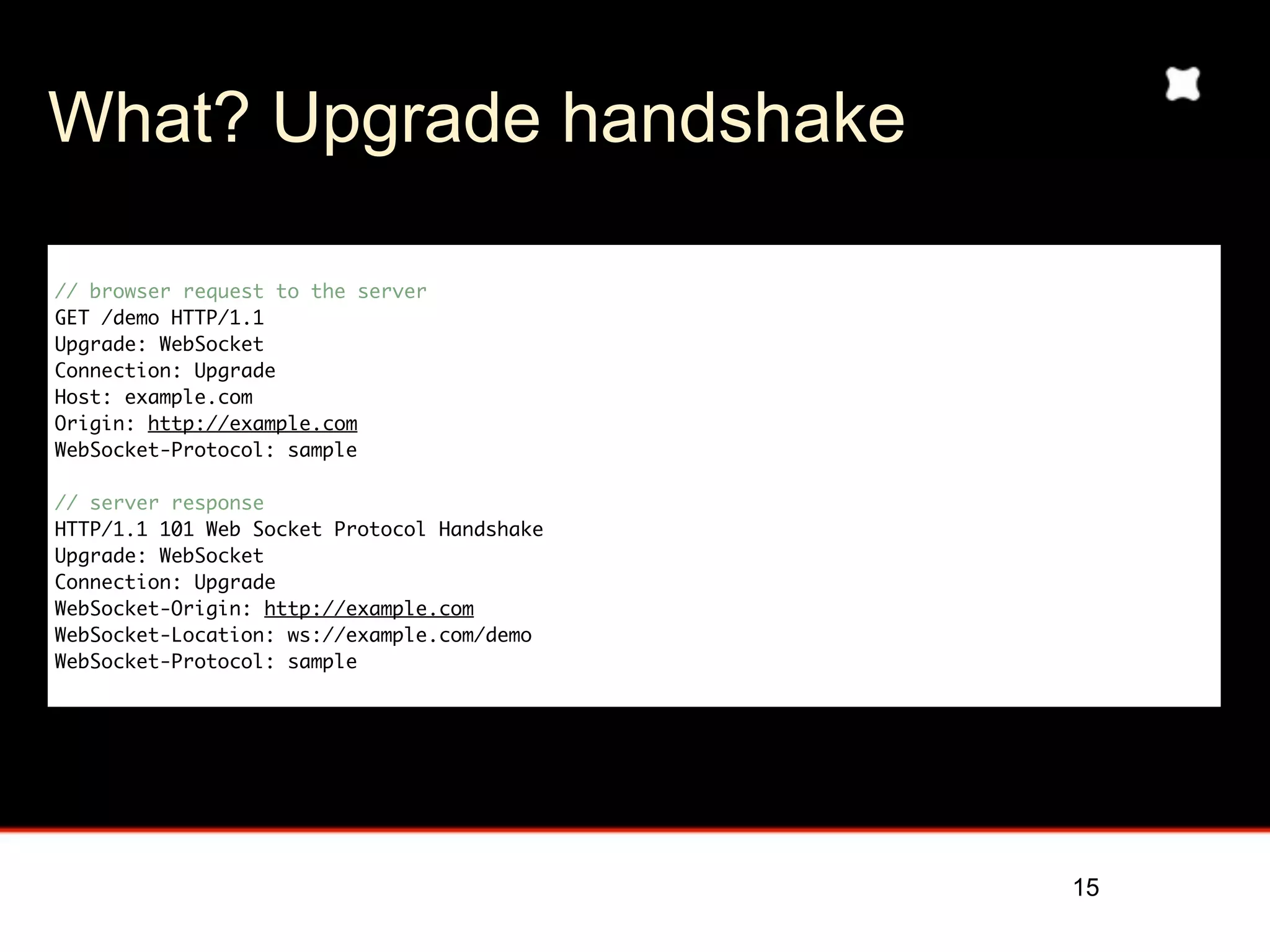
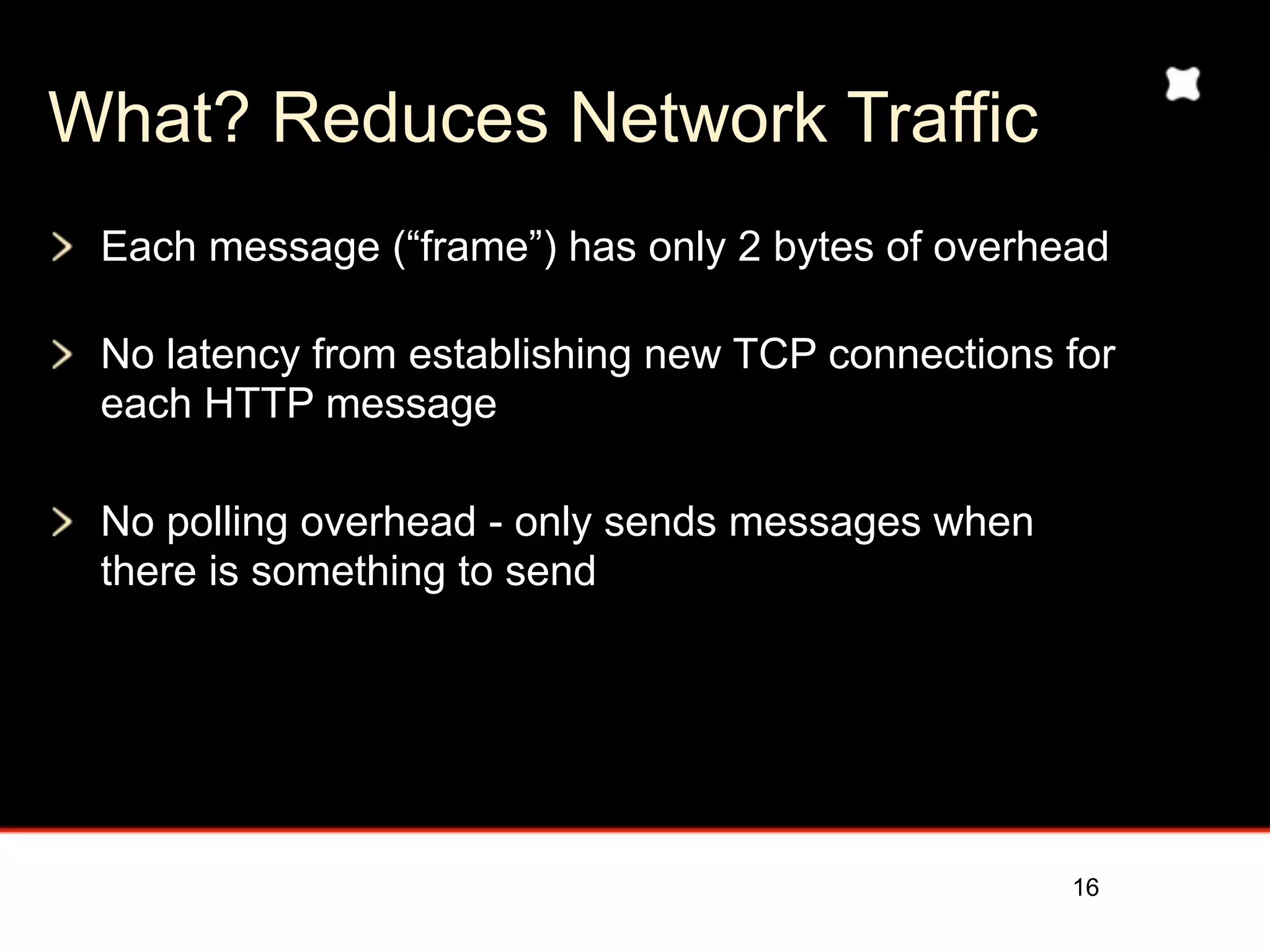
![What? Header traffic analysis
Example network throughput for WebSocket req/res
headers:
Use case A: 10,000 frames every 60 seconds
Network throughput is (2 x 10,000)/60 = 333 bytes = 2,664 bits
per second (2.6 Kbps) [was 1.1 Mbps]
Use case B: 10,000 frames every second
Network throughput is (2 x 100,000)/1 = 20,000 bytes = 160,000
bits per second (156 Kbps) [was 66 Mbps]
Use case C: 100,000 frames every 10 seconds:
Network throughput is (2 x 100,000)/10 = 20,000 bytes = 160,000
bits per second (156 Kbps) [was 66 Mbps]
(example statistics from Kaazing)
17](https://image.slidesharecdn.com/davidlindkvistwebsocketapisthlmwebmonkeyscopy-100421141801-phpapp02/75/The-HTML5-WebSocket-API-17-2048.jpg)
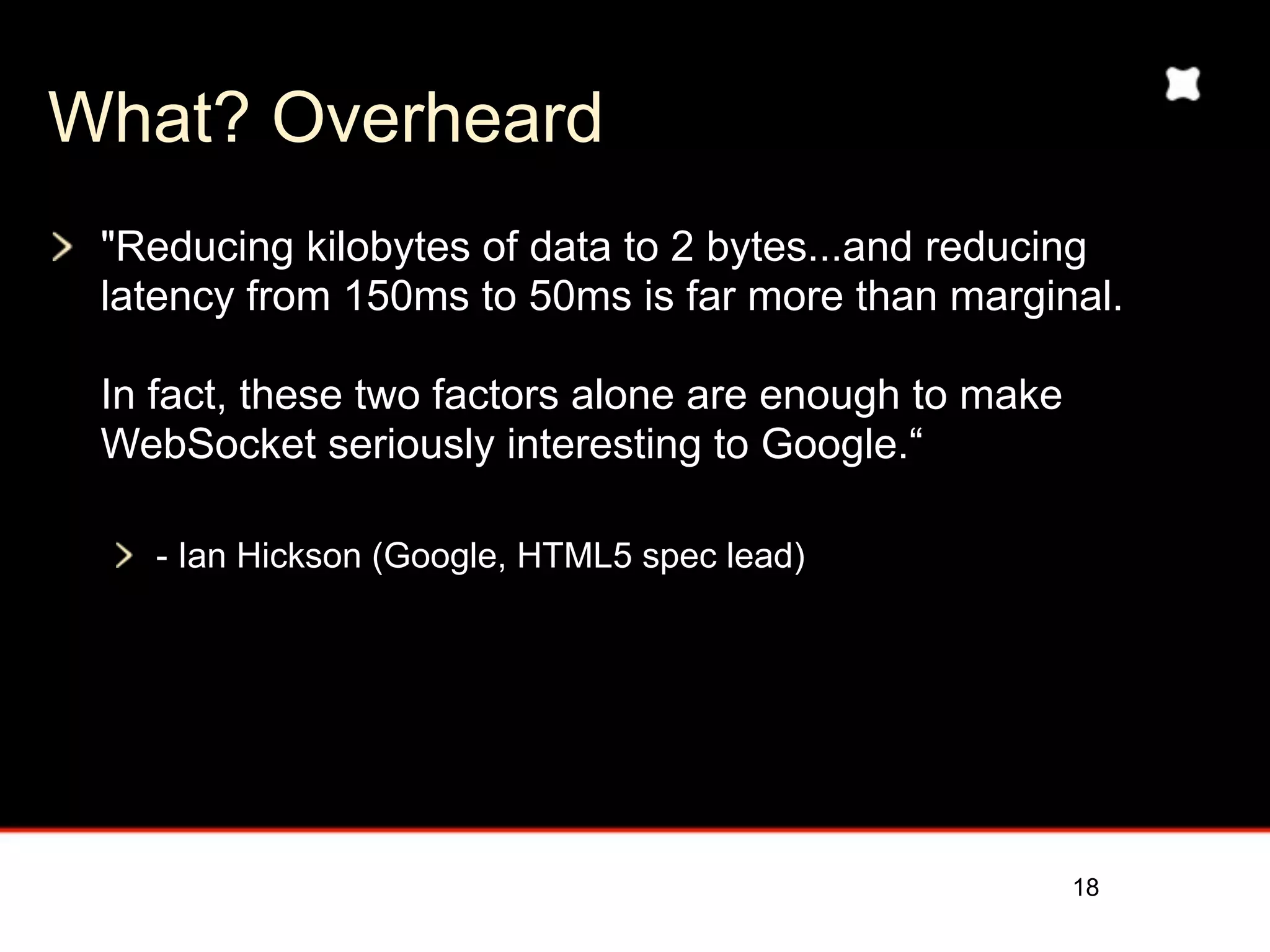

![How? The WebSocket interface
[Constructor(in DOMString url, in optional DOMString protocol)]
interface WebSocket {
readonly attribute DOMString URL;
// ready state
const unsigned short CONNECTING = 0;
const unsigned short OPEN = 1;
const unsigned short CLOSING = 2;
const unsigned short CLOSED = 3;
readonly attribute unsigned short readyState;
readonly attribute unsigned long bufferedAmount;
// networking
attribute Function onopen;
attribute Function onmessage;
attribute Function onerror;
attribute Function onclose;
boolean send(in DOMString data);
void close();
};
WebSocket implements EventTarget;
20](https://image.slidesharecdn.com/davidlindkvistwebsocketapisthlmwebmonkeyscopy-100421141801-phpapp02/75/The-HTML5-WebSocket-API-20-2048.jpg)
